The Rise and Fall of American Growth
description: a non-fiction book by Robert J. Gordon, an American professor of economics at Northwestern University
87 results

The Technology Trap: Capital, Labor, and Power in the Age of Automation
by
Carl Benedikt Frey
Published 17 Jun 2019
Never Done: A History of American Housework. (New York: Pantheon), 57. 27. Gordon, 2016, The Rise and Fall of American Growth), 123. 28. Quoted in “Farm Woman Works Eleven Hours a Day,” 1920, New York Times, July 6. 29. Quoted in Nye, 1990, Electrifying America, 270. 30. J. Greenwood, A. Seshadri, and M. Yorukoglu, 2005, “Engines of Liberation,” Review of Economic Studies 72 (1): 109–33. 31. Calculations are based on the Muncie, Indiana, median family income level (see Gordon, 2016, The Rise and Fall of American Growth, 121.) 32. “The Electric Home: Marvel of Science,” 1921, New York Times, April 10. 33.
…
Economic Growth (New Haven, CT: Yale University Press). 45. G. P. Mom and D. A. Kirsch, 2001, “Technologies in Tension: Horses, Electric Trucks, and the Motorization of American Cities, 1900–1925,” Technology and Culture 42 (3): 489–518. 46. Gordon, 2016, The Rise and Fall of American Growth, 227. 47. In the period 1850–80, 80 percent of the residents of Philadelphia were still walking to work. 48. Gordon, 2016, The Rise and Fall of American Growth, 56–57. 49. When the first issue of the periodical came out, the automobile industry was not even sufficiently important to be listed in the census under a separate heading. 50. G. Norcliffe, 2001, The Ride to Modernity: The Bicycle in Canada, 1869–1900 (Toronto: University of Toronto Press). 51.
…
Congress, 1984, “Computerized Manufacturing Automation: Employment, Education, and the Workplace,” No. 235 (Washington, DC: Office of Technology Assessment). 10. On improving working conditions, see R. J. Gordon, 2016, The Rise and Fall of American Growth: The U.S. Standard of Living Since the Civil War (Princeton, NJ: Princeton University Press), chapter 8. 11. R. Hornbeck, 2012, “The Enduring Impact of the American Dust Bowl: Short- and Long-Run Adjustments to Environmental Catastrophe,” American Economic Review 102 (4): 1477–507. 12. Ibid. 13. Gordon, 2016, The Rise and Fall of American Growth, 270. 14. “Shocking Death in Machinery,” 1895, New York Times, May 23. 15. “The Calamity,” 1911, New York Times, March 26. 16.

Capitalism in America: A History
by
Adrian Wooldridge
and
Alan Greenspan
Published 15 Oct 2018
Fishlow, “Transportation in the 19th and Early 20th Centuries,” 595. 11. Quoted in Daniel Yergin, The Prize: The Epic History of Oil, Money & Power (New York: Simon & Schuster, 1991), 79. 12. Gordon, The Rise and Fall of American Growth, 119. 13. Ron Chernow, The House of Morgan: An American Banking Dynasty and the Rise of Modern Finance (New York: Touchstone, 1990), 142. 14. Gordon, The Rise and Fall of American Growth, 158. 15. Ibid., 154–55. 16. Ibid., 131. 17. Ibid., 181–82. 18. Ibid., 185. 19. Richard White, The Republic for Which It Stands: The United States During Reconstruction and the Gilded Age, 1865–1896 (New York: Oxford University Press, 2017), 119. 20.
…
White, The Republic for Which It Stands, 363. 14. David Reynolds, America, Empire of Liberty (London: Allen Lane, 2009), 249–50. 15. White, The Republic for Which It Stands, 500. 16. Robert J. Gordon, The Rise and Fall of American Growth: The U.S. Standard of Living Since the Civil War (Princeton, NJ: Princeton University Press, 2016), 219. 17. White, The Republic for Which It Stands, 478–81. 18. Gordon, The Rise and Fall of American Growth, 310. 19. Ibid., 237. 20. Claude S. Fischer, Made in America: A Social History of American Culture and Character (Chicago: University of Chicago Press, 2010), 24. 21.
…
Kevin Phillips, Wealth and Democracy: A Political History of the American Rich (New York: Broadway Books, 2002), 58. 7. Robert J. Gordon, The Rise and Fall of American Growth: The U.S. Standard of Living Since the Civil War (Princeton, NJ: Princeton University Press, 2016), 167. 8. Charles R. Morris, A Rabble of Dead Money: The Great Crash and the Global Depression, 1929–1939 (New York: Public Affairs, 2017), 35. 9. Kennedy, Freedom from Fear, 17. 10. Gordon, The Rise and Fall of American Growth, 160. 11. Ibid., 158. 12. Ibid., 132. 13. Anthony Mayo and Nitin Nohria, In Their Time: The Greatest Business Leaders of the Twentieth Century (Boston, MA: Harvard Business School Press, 2005), 91. 14.

Selfie: How We Became So Self-Obsessed and What It's Doing to Us
by
Will Storr
Published 14 Jun 2017
In 1862 Quimby treated Mary Baker Eddy: One Simple Idea: How Positive Thinking Reshaped Modern Life, Mitch Horowitz (Crown, 2014), p. 132. economists sometimes call the ‘Great Compression . . . between 1945 and 1975: The Rise and Fall of American Growth: The US Standard of Living Since the Civil War, Robert J. Gordon (Princeton University Press, 2016), p. 613. The GI Bill: The Rise and Fall of American Growth: The US Standard of Living Since the Civil War, Robert J. Gordon (Princeton University Press, 2016), p. 606. between 1929 and 1945, lower incomes would grow faster: The Rise and Fall of American Growth: The US Standard of Living Since the Civil War, Robert J. Gordon (Princeton University Press, 2016), p. 613.
…
whilst in Britain they’re £73.5bn in the red: ‘Q&A: Student loan repayments’, Adam Palin, Financial Times, 19 June 2015. Globalization has led to cheap imports and higher levels of immigration . . . etc.: The Rise and Fall of American Growth: The US Standard of Living Since the Civil War, Robert J. Gordon (Princeton University Press, 2016), p. 615. Industry is embracing harsh new working conditions: The Rise and Fall of American Growth: The US Standard of Living Since the Civil War, Robert J. Gordon (Princeton University Press, 2016), p. 614. According to the Office of National Statistics, 800,000 people: ‘Just over 800,000 people on zero-hours contract for main job’, 9 March 2016, https://www.ons.gov.uk/news/news/justover800000peopleonzerohourscontractformainjob.
…
The average real income for the bottom 90 per cent: The Rise and Fall of American Growth: The US Standard of Living Since the Civil War, Robert J. Gordon (Princeton University Press, 2016), p. 610. Whilst those numbers hide rises for the well educated: The average real hourly wage for those with a college degree went up 22 per cent between 1979 and 2005. Red, Blue and Purple America: The Future of Election Demographics, Alan Abramowitz and Roy Teixeira (Brookings Institution Press, 2008), p. 110. During the Great Compression, those without a college education: The Rise and Fall of American Growth: The US Standard of Living Since the Civil War, Robert J.

Good Economics for Hard Times: Better Answers to Our Biggest Problems
by
Abhijit V. Banerjee
and
Esther Duflo
Published 12 Nov 2019
Annualized TFP growth in the US was 0.46 percent per year between 1880 and 1920 and 1.89 percent per year between 1920 and 1970. 8 Nicholas Crafts, “Fifty Years of Economic Growth in Western Europe: No Longer Catching Up but Falling Behind?,” World Economics 5, no. 2 (2004): 131–45. 9 Robert Gordon, The Rise and Fall of American Growth (Princeton, NJ: Princeton University Press, 2016). 10 Annualized TFP growth in the US was 1.89 percent per year between 1920 and 1970 and 0.57 between 1970 and 1995; Robert Gordon, The Rise and Fall of American Growth (Princeton, NJ: Princeton University Press, 2016), 575, figure 17.2. 11 Robert Gordon, The Rise and Fall of American Growth (Princeton, NJ: Princeton University Press, 2016), 575, figure 17.2. Annual TFP growth was 0.40 from 2014 to 2014, even lower than the 0.70 annual TFP growth during the 1973–1994 period and the annual 0.46 TFP growth during the 1890–1920 period. 12 “Total Factor Productivity,” Federal Reserve Bank of San Francisco, accessed June 19, 2019, https://www.frbsf.org/economic-research/indicators-data/total-factor-productivity-tfp/. 13 Robert Gordon and Joel Mokyr, “Boom vs.
…
Taylor and Harald Uhlig (Amsterdam: North Holland, 2016), 3–69. 3 Angus Maddison, “Historical Statistics of the World Economy: 1-2008 AD,” Groningen Growth and Development Centre: Maddison Project Database (2010). 4 Angus Maddison, “Measuring and Interpreting World Economic Performance 1500–2001,” Review of Income and Wealth 51, no. 1 (2005): 1–35, https://doi.org/10.1111/j.1475-4991.2005.00143.x. 5 Robert Gordon, The Rise and Fall of American Growth (Princeton, NJ: Princeton University Press, 2016), 258. 6 J. Bradford DeLong, Claudia Goldin, and Lawrence F. Katz, “Sustaining U.S. Economic Growth,” in Henry J. Aaron, James M. Lindsay, Pietro S. Nivola, Agenda for the Nation (Washington, DC: Brookings Institution, 2003), 17–60. 7 Robert Gordon, The Rise and Fall of American Growth (Princeton, NJ: Princeton University Press, 2016), 575, figure 17.2. Annualized TFP growth in the US was 0.46 percent per year between 1880 and 1920 and 1.89 percent per year between 1920 and 1970. 8 Nicholas Crafts, “Fifty Years of Economic Growth in Western Europe: No Longer Catching Up but Falling Behind?
…
,” Harvard Business Review, December 14, 2015 and “Four Fundamentals of Business Automation,” McKinsey Quarterly, November 2016, accessed June 19, 2019, https://www.mckinsey.com/business-functions/digital-mckinsey/our-insights/four-fundamentals-of-workplace-automation. 7 “Automation, Skills Use and Training,” Organisation for Economic Co-operation and Development Library, accessed April 19, 2019, https://www.oecd-ilibrary.org/employment/automation-skills-use-and-training_2e2f 4eea-en. 8 “Robots and Artificial Intelligence,” Chicago Booth: The Initiative on Global Markets, IGM Forum, June 30, 2017. 9 Robert Gordon, The Rise and Fall of American Growth (Princeton, NJ: Princeton University Press, 2016). 10 Databases, Tables, and Calculators by Subject, Series LNS14000000, Bureau of Labor Statistics, accessed April 11, 2019, https://data.bls.gov/timeseries/lns14000000. 11 Robert Gordon, The Rise and Fall of American Growth (Princeton, NJ: Princeton University Press, 2016); “Labor Force Participation Rate, Total (% total population ages 15+) (national estimate),” World Bank Open Data, https://data.worldbank.org/indicator/SL.TLF.CACT.NE.ZS?

A World Without Work: Technology, Automation, and How We Should Respond
by
Daniel Susskind
Published 14 Jan 2020
Data is from a search of the CB Insights database of earnings calls at https://www.cbinsights.com/. Similar searches are done in “On Earnings Calls, Big Data Is Out. Execs Have AI on the Brain,” CB Insights, 30 November 2017; Bass, “Non-tech Businesses.” 75. Paul Krugman, “Paul Krugman Reviews ‘The Rise and Fall of American Growth’ by Robert J. Gordon,” New York Times, 25 January 2016. 76. Robert Gordon, The Rise and Fall of American Growth (Oxford: Princeton University Press, 2017). 77. In eighty-seven years’ time because 100 × 1.00887 = 200.01, to two decimal places. If the United States were to return to the 2.41 percent growth rate, the same doubling of wealth would take just twenty-nine years: 100 × 1.024129 = 199.50.
…
I hope that even the most conservative economists who think about the future would not disagree that this is our direction of travel: machines gradually encroaching on more and more tasks, relentlessly becoming more capable with the passing of time. Take the economic historian, Robert Gordon, famed for his technological skepticism. In the last few years, there has been much heated discussion about his major work, The Rise and Fall of American Growth, in which he argues that our best technological times are behind us. (Or, as the economist Paul Krugman put it, “the future isn’t what it used to be.”)75 Gordon believes that the low-hanging fruits on the tree of economic growth have already been picked. Yet even he, suspicious about today’s technological claims, does not believe that the tree is now barren.
…
Gordon’s central claim is that the “special century” of strong economic growth in the United States between 1870 and 1970 “will not be repeated” since “many of the great inventions could happen only once.”78 And, of course, future economic gains will not be driven by the reinvention of electricity, sewage networks, or any other great innovations from the past. The same piece of fruit on the tree cannot be picked twice. But it does not follow that no other great inventions lie in our future. The tree will doubtless bear new fruit in the years to come. The Rise and Fall of American Growth is magisterial and yet, in a sense, self-contradictory. It argues with great care that growth was “not a steady process” in the past, yet it concludes that a steady process is exactly what we face in the future: a steady process of decline in economic growth, with ever fewer unexpected innovative bursts and technological breakthroughs of the kind that drove our economies onward in the past.
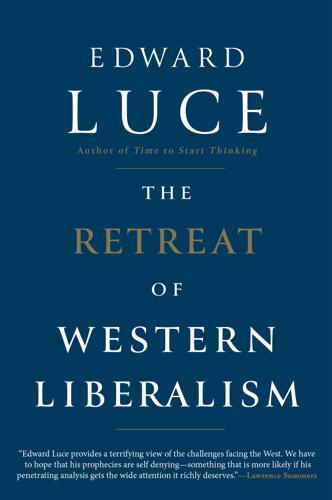
The Retreat of Western Liberalism
by
Edward Luce
Published 20 Apr 2017
Bernstein, The Birth of Plenty: How the Prosperity of the Modern World was Created (McGraw-Hill, New York, 2004). 58 Occupational Outlook Handbook, Bureau of Labor Statistics, <https://www.bls.gov/ooh/>. 59 Robert J. Gordon, The Rise and Fall of American Growth: The US Standard of Living since the Civil War (Princeton University Press, Princeton, 2016), p. ix. 60 Ibid. p. 3. 61 Ibid., p. 4. 62 For my own treatment of Gordon and Cohen and DeLong’s books, see ‘Is robust American growth a thing of the past?’, Financial Times, 19 February 2016, <https://www.ft.com/content/80c3164e-d644-11e5-8887-98e7feb46f27>. 63 Gordon, The Rise and Fall of American Growth, p. 13. 64 James Manyika, Susan Lund, Jacques Bughin, Kelsey Robinson, Jan Mischke and Deepa Mahajan, ‘Independent Work: Choice, necessity and the gig economy’, McKinsey Global Institute report, October 2016, <http://www.mckinsey.com/global-themes/employment-and-growth/independent-work-choice-necessity-and-the-gig-economy>. 65 Ibid. 66 Ibid. 67 Ibid. 68 Jaron Lanier, Who Owns the Future?
…
Meanwhile, remind yourselves of the impact manufacturing job losses have had on Western politics. Way more than half of Trump’s voters were male. The same applies to the Brexit electorate. As the baseball legend Yogi Berra allegedly said, it is tough to make predictions – especially about the future. The economist Robert Gordon clearly wasn’t listening. His book The Rise and Fall of American Growth makes a startling forecast that did not go down well in Silicon Valley. The future is not what it used to be, he says. The peak age of high growth and disruptive technology is behind us. Forget the power of the iPhone. Stop exulting about Google’s driverless car. Such wonders pale beside the changes felt by earlier generations.
…
(essay), 5, 14, 181 Garten, Jeffrey, From Silk to Silicon, 25 Gates, Bob, 177–8 gay marriage issue, 187, 188 gender, 57 General Agreement on Tariffs and Trade (GATT), 72 Genghis Khan, 25 gentrification, creeping, 46, 48, 50–1 Georgia, Rose Revolution (2003), 79 Germany, 15, 42, 43, 57, 78, 115; far-right resurgence in, 139–40; and future of EU, 180; Nazi, 116, 117, 155, 171; post-war constitution, 116; rise of from late nineteenth century, 156–7; Trump’s attitude towards, 179–80; vocational skills education, 197 gig economy, 62–5 Gladiator (film), 128–9 Glass, Ruth, 46 global economy: centre of gravity shifting eastwards, 21–2, 141; change of guard (January 2017), 19–20, 26–7; emerging middle classes, 21, 31, 39, 159; end of Washington Consensus, 29–30; fast-growing non-Western economies, 20–2; Great Convergence, 12, 13, 24, 25–33; Great Divergence, 13, 22–5; Great Recession, 63–4, 83–4, 192, 193; new protectionism, 19–20, 73, 149; ‘precariat’ (‘left-behinds’), 12, 13, 43–8, 50, 91, 98–9, 110, 111, 131; rapid expansion of China, 20–2, 25–8, 157, 159; spread of market economics, 8, 29; West’s middle-income problem, 13, 31–2, 34–41; see also globalisation, economic; growth, economic globalisation, economic: China as new guardian of, 19–20, 26–7; Bill Clinton on, 26; in decades preceding WW1, 155; Elephant Chart, 31–3; Friedman’s Golden Straitjacket, 74; Jeffrey Garten’s history of, 25; and global trilemma, 72–3; and multinational companies, 26–7; need to abandon deep globalisation, 73–4; next wave of, 32; radical impact of, 12–13; and stateless elites, 51, 71; and Summers’ responsible nationalism, 71–2; and technology, 55–6, 73, 174 Gongos (government-organised non-governmental organisations), 85 Google, 54, 67 Gordon, Robert, The Rise and Fall of American Growth, 57–8, 59–61 Graham, Lindsey, 134 Greece: classical, 4, 10, 25, 137–8, 156, 200; overthrow of military junta, 77 Greenspan, Alan, 71 growth, economic: and bad forecasting, 27; as Bell’s ‘secular religion’, 37; and digital economy, 54–5, 59, 60; Elephant Chart, 31–3; emerging economies as engine of, 21, 30, 31, 32; Golden Age for Western middle class, 33–4, 43; Robert Gordon’s thesis, 57–8, 59–61; and levels of trust, 38–9; as liberal democracy’s strongest glue, 13, 37, 103, 201–2; out-dated measurement models, 30–1; technological leap forward (from 1870), 58–9; West’s middle-income problem, 13, 31–2, 34–41 Hamilton, Alexander, 78 Harvard University, 44–5 healthcare and medicine, 35, 36, 42, 58, 59, 60, 62, 102, 103, 198 Hedges, Chris, Empire of Illusion, 125 Hegel, Friedrich, 161–2 Heilbroner, Robert, 10 Hispanics in USA, 94–5 history: 1930s extremism, 116–17; Chinese economy to 1840s, 22–3; Fukuyama’s ‘end of history’, 5, 14, 181; Great Divergence, 13, 22–5; Hobson’s prescience over China, 20–1; and inequality, 41–3; and journalists, 15; Keynes’ view, 153–5; Magna Carta, 9–10; of modern democracy, 112–17; nineteenth-century protectionism, 78; nineteenth-century European diplomacy, 7–8, 155–6, 171–2; non-Western versions of, 11; Obama on, 190; Peace of Westphalia (1648), 171; populist surge in late-nineteenth-century USA, 110–11; post-war golden era, 33–4, 43; post-war US foreign policy, 183–4; technological leap forward (from 1870), 58–9; theories of, 10–11, 14, 190; Thucydides trap, 156–7; utopian faith in technology, 127–8; Western thought on China, 158–9, 161–2; ‘wrong side of history’ language, 187–8, 190, 191–2; Zheng He’s naval fleet, 165–6; see also Cold War; Industrial Revolution Hitler, Adolf, 116, 128, 171 Hobbes, Thomas, 104 Hobsbawm, Eric, 5 Hobson, John, 20, 22–3 Hofer, Norbert, 15–16 homosexuality, 106, 107, 109–10 Hong Kong, 163–4 Hourly Nerd, 63 Hu Jintao, 159 Humphrey, Hubert, 189 Hungary, 12, 82, 138–9, 181 Huntington, Samuel, The Clash of Civilizations, 181 Huxley, Aldous, Brave New World, 128, 129 illiberal democracy concept, 119, 120, 136–7, 138–9, 204 India: caste system, 202; circular view of history, 11; colonial exploitation of, 22, 23, 55–6; democracy in, 201; future importance of, 167, 200–1; and Industrial Revolution, 23–4; internal migration in, 41; as nuclear power, 175; and offshoring, 61–2; pre-Industrial Revolution economy, 22; rapid expansion of, 21, 25, 28, 30, 58, 200, 201–2; Sino-Indian war (1962), 166; as ‘young’ society, 39, 200 Indonesia, 21 Industrial Revolution, 13, 22, 23–4, 46, 53; non-Western influences on, 24–5; and steam power, 24, 55–6 inequality: decline in post-war golden era, 43; and demophobia, 122–3; forces of equalisation, 41–3; global top 1 per cent, 32–3, 50–1; growth of in modern era, 13, 41, 43–51; in India, 202; in liberal cities, 49–51; in nineteenth century, 41; and physical segregation, 46–8; urban–hinterland split, 46–51 infant mortality, 58, 59 inflation, 36 Instagram, 54 intelligence agencies, 133–4 intolerance and incivility, 38 Iran, 175, 193, 194 Iraq War (2003), 8, 81, 85, 156 Isis (Islamic State), 178, 181, 182–3 Islam, 24–5; Trump’s targeting of Muslims, 135, 181–3, 195–6 Israel, 175 Jackson, Andrew, 113–14, 126, 134 Jacobi, Derek, 128–9 Japan, 78, 167, 175 Jefferson, Thomas, 56, 112, 163 Jobs, Steve, 25 Johnson, Boris, 48, 118–19 Jones, Dan, 9 Jospin, Lionel, 90 journalists, 15, 65 judiciary, US, 134–5 Kant, Immanuel, 126 Kaplan, Fred, Dark Territory: The Secret History of Cyber War, 176–8 Kennedy, John F., 146, 165 Kerry, John, 8 Keynes, John Maynard, 153–5, 156 Khan, A.Q., 175 Khan, Sadiq, 49–50 Kissinger, Henry, 14, 162, 166 knowledge economy, 47, 61 Kreider, Tim, 111 Krugman, Paul, 162 Ku Klux Klan, 98, 111 labour markets: and digital revolution, 52–5, 56, 61–8; and disappearing growth, 37; driving jobs, 56–7, 63, 191; gig economy, 62–5; offshoring, 61–2; pressure to postpone retirement, 64; revolution in nature of work, 60–6, 191–3; security industry, 50; status of technical and service jobs, 197–8; and suburban crisis, 46; wage theft, 192; zero hours contracts, 191 Lanier, Jaron, 66, 67 Larkin, Philip, 188 Le Pen, Marine, 15, 102, 108–10 League of Nations, 155 Lee, Spike, 46 Lee Teng-hui, 158 left-wing politics: and automation, 67; decline in salience of class, 89–92, 107, 108–10; elite’s divorce from working classes, 87–8, 89–95, 99, 109, 110, 119; in France, 105–10; Hillaryland in USA, 87–8; and ‘identity liberalism’, 14, 96–8; McGovern–Fraser Commission (1972), 189; move to personal liberation (1960s), 188–9; populist right steals clothes of, 101–3; Third Way, 89–92; urban liberal elites, 47, 49–51, 71, 87–9, 91–5, 110, 204 Lehman Brothers, 30 Li, Eric, 86, 163–4 liberalism, Western: Chinese hostility to, 84–6, 159–60, 162; crisis as real and structural, 15–16; declining belief in ‘meritocracy’, 44–6; declining hegemony of, 14, 21–2, 26–8, 140–1, 200–1; elites as out of touch, 14, 68–71, 73, 87–8, 91–5, 110, 111, 119, 204; and ‘identity liberalism’, 14, 96–8; linear view of history, 10–11; Magna Carta as founding myth of, 9–10; majority-white backlash concept, 12, 14, 96, 102, 104; psychology of dashed expectations, 34–41; scepticism as basis of, 10; and Trump’s victory, 11–12, 28, 79, 81, 111; ‘wrong side of history’ language, 187–8, 190, 191–2; see also democracy, liberal Lilla, Mark, 96, 98 Lincoln, Abraham, 146 Lindbergh, Charles, 117 literacy, mass, 43, 59 Lloyd George, David, 42 Locke, John, 104 London, 46, 47, 48, 49–50, 140 Los Angeles, 50 Machiavelli, Niccolò, 133 Magna Carta, 9–10 Mahbubani, Kishore, 162 Mailer, Norman, Miami and the Siege of Chicago, 189 Mair, Peter, 88, 89, 118 Mann, Thomas, 203 Mao Zedong, 163, 165 Marconi, Guglielmo, 128 Marcos, Ferdinand, 136 Marshall, John, 134 Marshall Plan, 29 Marxism, 10, 11, 51, 68, 106, 110, 162 Mattis, Jim, 150–1 May, Theresa, 100, 152, 153 McAfee, Andrew, 60 McCain, John, 134 McMahon, Vince and Linda, 124, 125 McMaster, H.
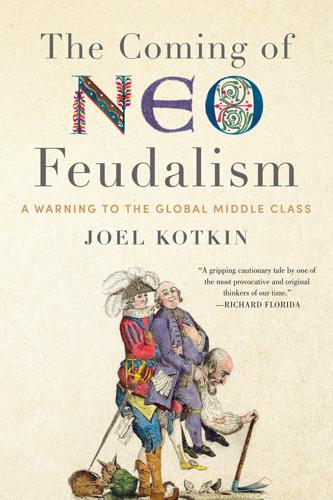
The Coming of Neo-Feudalism: A Warning to the Global Middle Class
by
Joel Kotkin
Published 11 May 2020
French, China’s Second Continent: How a Million Migrants Are Building a New Empire in Africa (New York: Vintage, 2015), 33–25, 261; Jason Horowitz and Jack Ewing, “Italy May Split With Allies and Open Its Ports to China’s Building Push,” New York Times, March 6, 2019, https://www.nytimes.com/2019/03/06/world/europe/italy-ports-china.html. 13 Martin Jacques, When China Rules the World: The End of the Western World and the Birth of a New Global Order (New York: Penguin, 2009), 363–64; Tunku Varadarajan, “India Turns West but Away from Western Values,” Wall Street Journal, May 23, 2019, https://www.wsj.com/articles/india-turns-west-but-away-from-western-values-11558651907. 14 Karel van Wolferen, The Enigma of Japanese Power: People and Politics in a Stateless Nation (New York: Vintage, 1990), 1. 15 Robert J. Gordon, The Rise and Fall of American Growth (Princeton: Princeton University Press, 2016), 574–76, 601–4. 16 Fred Pearce, The Coming Population Crash and Our Planet’s Surprising Future (Boston: Beacon, 2011), 94–95. 17 Emma Chen and Wendell Cox, “Six Adults and One Child in China,” New Geography, October 9, 2011, http://www.newgeography.com/content/002474-six-adults-and-one-child-china; Paul Yip, “Does China actually need more children to replace its declining working-age population?”
…
City Journal, Spring 2018, https://www.city-journal.org/html/technology-destroying-labor-market-15829.html. 28 Martin Wolf, “Seven charts that show how the developed world is losing its edge,” Financial Times, July 19, 2017, https://www.ft.com/content/1c7270d2-6ae4-11e7-b9c7-15af748b60d0; Gordon, The Rise and Fall of American Growth, 601–4. 29 David P. Goldman, “The Triumph of Inequality,” PJ Media, August 14, 2017, https://pjmedia.com/spengler/2017/08/14/the-triumph-of-inequality/. 30 See Joel Kotkin, “The Growth Dilemma,” Quillette, January 9, 2020, https://quillette.com/2020/01/09/the-growth-dilemma/. 31 Johannes Niederhauser, “An Interview with John Gray: ‘Human Progress Is a Lie,’” Vice, March 28, 2013, https://www.vice.com/en_us/article/qbwqem/john-gray-interview-atheism. 32 Austin Williams, The Enemies of Progress: The Dangers of Sustainability (Exeter: Societas, 2008), 8–9, 59.
…
Katz, “The Shaping of Higher Education: The Formative Years in the United States, 1890 to 1940,” National Bureau of Economic Research, April 1998, https://www.nber.org/papers/w6537.pdf. 7 Daniel Bell, The Coming of Post-Industrial Society (New York: Basic Books, 1973), 217–22; Erin Duffin, “U.S. college enrollment statistics for public and private colleges from 1965 to 2016 and projections up to 2028,” Statista, August 9, 2019, https://www.statista.com/statistics/183995/us-college-enrollment-and-projections-in-public-and-private-institutions/. 8 Robert Gordon, The Rise and Fall of American Growth (Princeton: Princeton University Press, 2016), 513, 521. 9 Max Roser and Esteban Ortiz-Ospina, “Tertiary Education,” Our World in Data, 2019, https://ourworldindata.org/tertiary-education; Angel Calderon, “The higher education landscape is changing fast,” University World News, June 22, 2018, http://www.universityworldnews.com/article.php?

More: The 10,000-Year Rise of the World Economy
by
Philip Coggan
Published 6 Feb 2020
Claudia Goldin, “The role of World War II in the rise of women’s work”, NBER working paper 3203, https://www.nber.org/papers/w3203.pdf 98. Smil, Energy and Civilisation, op. cit. 99. Alan L. Olmstead and Paul W. Rhode, “The diffusion of the tractor in American agriculture 1910–1960”, NBER working paper 7947, www.nber.org/papers/w7947 100. Robert Gordon, The Rise and Fall of American Growth: The US Standard of Living Since the Civil War 101. Barbara Krasner-Khait, “The impact of refrigeration”, History Magazine, https://www.history-magazine.com/refrig.html 102. Frieden, Global Capitalism, op. cit. 103. St Clair, The Golden Thread, op. cit. 104. Michael Huberman, “Labor movements”, The Cambridge History of Capitalism, Volume 2, op. cit. 105.
…
The nearer the figure gets to 1, the more unequal the distribution. 42. Brian Keeley, “Income inequality: The gap between rich and poor”, December 15th 2015, https://www.oecd-ilibrary.org/social-issues-migration-health/income-inequality_9789264246010-en 43. Source: https://fred.stlouisfed.org/series/SIPOVGINIUSA 44. Gordon, The Rise and Fall of American Growth, op. cit. 45. David Card and John DiNardo, “Skill-biased technological change and rising wage inequality: some problems and puzzles”, 2002, http://davidcard.berkeley.edu/papers/skill-tech-change.pdf 46. “Chief executives win the pay lottery”, The Economist, October 20th 2018 47.
…
David Warsh, Knowledge and the Wealth of Nations: A Story of Economic Discovery 5. Alasdair Nairn, Engines That Move Markets: Technology Investing from Railroads to the Internet and Beyond 6. Ibid. 7. Robert Friedel, A Culture of Improvement: Technology and The Western Millennium 8. Gordon, The Rise and Fall of American Growth, op. cit. 9. Mary Bellis, “Who invented the microchip?”, ThoughtCo., https://www.thoughtco.com/what-is-a-microchip-1991410 10. “The end of Moore’s law”, The Economist, April 19th 2015 11. Nairn, Engines That Move Markets, op. cit. 12. Ibid. 13. Elli Narewska, “The end of hot metal printing”, The Guardian, March 3rd 2015 14.
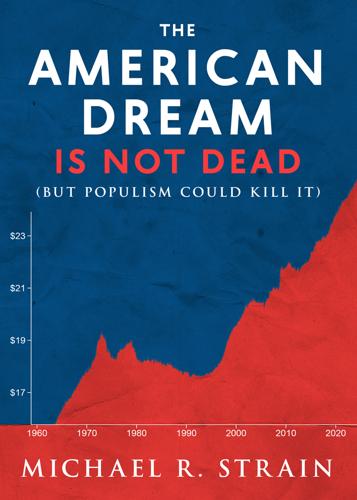
The American Dream Is Not Dead: (But Populism Could Kill It)
by
Michael R. Strain
Published 25 Feb 2020
Men saw their college-degree attainment increase from 21 percent in 1980 to 35 percent in 2018.25 In 1983, the median net worth for a family was approximately $52,000 (inflation-adjusted to 2016 dollars).26 By 2016, median net worth had grown to $97,300.27 I don’t want to take up too much space demonstrating the obvious in this short book, but here are some additional datums taken from two recent books, The Rise and Fall of American Growth, by the economist Robert Gordon, and Enlightenment Now by Stephen Pinker.: Improvements in heart attack survival rates from 1984 to 1998 yielded a one-year increase in life expectancy worth $70,000 for a $10,000 cost of improved medical technology.28 According to Gordon, the mortality rate from cardiovascular/renal disease has fallen from 500 people per 100,000 in 1970 to under 300 per 100,000 in 2007.29 And by 2017, cardiovascular deaths had fallen to 165 per 100,000.30 The development of antiretroviral therapy has improved quality of life for 1.2 million Americans with HIV and allowed them to have an “almost normal lifespan without experiencing serious illnesses related to their HIV infection.”31 Nearly 90 percent of households had computers, and nearly 80 percent had internet access by 2013.
…
Avery, et al., “Survey of Consumer Finances, 1983: A Second Report,” Federal Reserve Bulletin, 70 (December 1984), 857–68. 27.Jesse Bricker, et al., “Changes in US family finances from 2013 to 2016: Evidence from the Survey of Consumer Finances.” Federal Reserve Bulletin, 103 (2017): 1. 28.Robert J. Gordon, The Rise and Fall of American Growth: The US Standard of Living Since the Civil War. Vol. 70. Princeton University Press, 2017, 484. 29.Gordon, 464. 30.Centers for Disease Control, Age-adjusted death rates for selected causes of death, by sex, race, and Hispanic origin: United States, selected years 1950–2017 (Trend Tables).
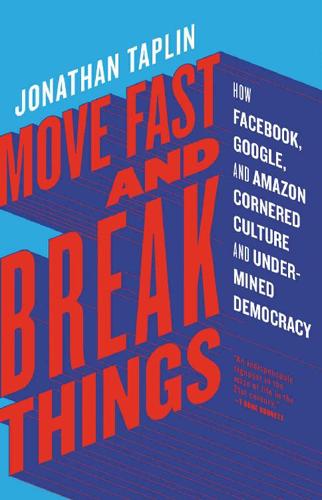
Move Fast and Break Things: How Facebook, Google, and Amazon Cornered Culture and Undermined Democracy
by
Jonathan Taplin
Published 17 Apr 2017
Unlike the years of more than 6 percent growth spurred by twentieth-century innovation cycles (electricity, communication, transportation), the digital revolution is delivering less than 2 percent growth and increasing inequality in the developed world. As economist Paul Krugman notes, reviewing Robert Gordon’s The Rise and Fall of American Growth: The U.S. Standard of Living Since the Civil War, “Gordon suggests that the future is all too likely to be marked by stagnant living standards for most Americans, because the effects of slowing technological progress will be reinforced by a set of ‘headwinds’: rising inequality, a plateau in education levels, an aging population and more.”
…
One possibility for this anomaly is that the entrepreneurs heading these firms have most of their wealth in the stock of their companies and they would rather use the cash to support the stock (through buybacks) than make long-term investments, which might take years to show results. The second question we need to ask is posed by the economist Robert Gordon in his book The Rise and Fall of American Growth. Gordon argues that the hype around the technology revolution is overdone and that digital services are less important to productivity than any one of the five great inventions that drove economic growth before 1970: electricity, urban sanitation, chemicals and pharmaceuticals, the internal combustion engine, and telecommunications.
…
This is essential reading for anyone who wants to understand what happened to our democracy. Robert McChesney, Digital Disconnect: How Capitalism Is Turning the Internet Against Democracy (New York: New Press, 2015). This is a really good primer from a media activist and scholar who has been fighting media monopoly for twenty-five years. Robert Gordon, The Rise and Fall of American Growth (Princeton: Princeton University Press, 2016). This is the great antidote to digital utopians. Gordon’s well-researched text shows that the Internet has not been the productivity bounty that was promised. Sara C. Kingsley, Mary L. Gray, and Siddharth Suri, “Monopsony and the Crowd: Labor for Lemons?”
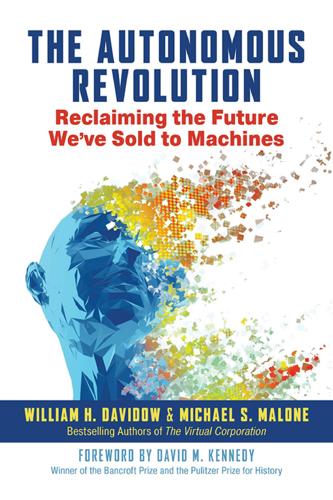
The Autonomous Revolution: Reclaiming the Future We’ve Sold to Machines
by
William Davidow
and
Michael Malone
Published 18 Feb 2020
“Henry Ford,” Wikipedia, https://en.wikipedia.org/wiki/Henry_Ford#The_five-day_workweek (accessed June 26, 2019). 3. “Designing Smart Vehicles for a Smart World,” Ford Motor Company, http://corporate.ford.com/news-center/press-releases-detail/677-5-dollar-a-day (accessed June 26, 2019). 4. Robert J. Gordon, The Rise and Fall of American Growth (Princeton, N.J.: Princeton University Press, 2016), 11. 5. “Ford Model T,” Wikipedia, https://en.wikipedia.org/wiki/Ford_Model_T (accessed June 26, 2019). 6. Peter Huber, The Bottomless Well (New York: Basic Books, 2006). 7. Joel A. Tarr, “Urban Pollution—Many Long Years Ago,” American Heritage (October 1971), reproduced by Coalition to Ban Horse-Drawn Carriages, http://www.banhdc.org/archives/ch-hist-19711000.html (accessed June 26, 2019). 8.
…
,” IEEE Spectrum, April 16, 2015, https://spectrum.ieee.org/tech-talk/semiconductors/devices/how-much-did-early-transistors-cost (accessed June 26, 2019); and “Handel Jones: Cost per Transistor Flat from 28 to 7nm,” AnandTech, June 15, 2016, https://forums.anandtech.com/threads/handel-jones-cost-per-transistor-flat-from-28-to-7nm.2476904/ (accessed June 26, 2019). 15. “M&A Frenzy in the Chip Industry, the Growth of GaN Technology, and Why It Matters,” EPC, 2015, http://epc-co.com/epc/EventsandNews/Newsletters/FJGF/Issue16/index.html (accessed June 26, 2019). 16. Gordon, The Rise and Fall of American Growth, 16. 17. C. I. Jones, “The Facts of Economic Growth,” in Handbook of Macroeconomics, vol. 2 (Elsevier, 2016), http://web.stanford.edu/~chadj/facts.pdf (accessed June 26, 2019); “U.S. Population, 1790–2000: Always Growing,” United States History.com, https://www.u-s-history.com/pages/h980.html; and “United States GDP Growth Rate,” Trading Economics, http://www.tradingeconomics.com/united-states/gdp-growth (accessed June 26, 2019). 18.
…
“Netflix,” Forbes.com, http://www.forbes.com/companies/netflix/ (accessed June 26, 2019); and “Netflix Inc Sales per Employee,” CSIMarket, https://csimarket.com/stocks/NFLX-Revenue-per-Employee.html. 33. “Blockbuster LLC,” Wikipedia, https://en.wikipedia.org/wiki/Blockbuster_LLC (accessed June 26, 2019). 34. Carl Bialik, “Netflix’s CEO Is Mobilizing for Battle with Amazon,” Wall Street Journal, October 20, 2004, https://www.wsj.com/articles/SB109786059137346731. 35. Gordon, The Rise and Fall of American Growth, 523. 36. “GDP: One of the Great Inventions of the 20th Century,” Bureau of Economic Analysis, January 2000, https://www.bea.gov/scb/account_articles/general/0100od/maintext.htm (accessed on June 26, 2019). 37. “GDP as a False Measure of a Country Economic Output,” Softpanorama, http://www.softpanorama.org/Skeptics/Financial_skeptic/Casino_capitalism/Number_racket/gdp_is_a_questionable_measure_of_economic_growth.shtml#Kuznets_warning. 38. “2018 Social Progress Index,” Social Progress.org, https://www.socialprogressindex.com/?
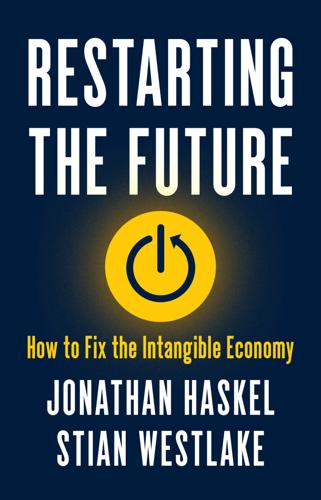
Restarting the Future: How to Fix the Intangible Economy
by
Jonathan Haskel
and
Stian Westlake
Published 4 Apr 2022
Once the gods favoured us, but their favour has now been withdrawn, and we find it difficult to restore the golden age of prosperity. Some economic explanations for the current productivity downturn pin the blame on exogenous events. The influential narratives of growth slowdown by Tyler Cowen (The Great Stagnation) and Robert Gordon (The Rise and Fall of American Growth) fit into this time-honoured tradition.23 Both argue that a range of headwinds meant that growth, both from technological progress and from human factors such as improvements in education, had slowed down; Gordon in particular remains pessimistic that it will speed up again in the future.
…
In Inflation, Depression, and Economic Policy in the West, edited by Anthony S. Courakis, 91–109. Totowa, NJ: Barnes and Noble Books. Gordon, Robert J. 2012. “Is U.S. Economic Growth Over? Faltering Innovation Confronts the Six Headwinds.” National Bureau of Economic Research working paper no. 18315. https://doi.org/10.3386/w18315. ________. 2016. The Rise and Fall of American Growth: The U.S. Standard of Living since the Civil War. Princeton, NJ: Princeton University Press. Graeber, David. 2018. Bullshit Jobs: A Theory. London: Allen Lane. Greenwald, Daniel. 2019. “Firm Debt Covenants and the Macroeconomy: The Interest Coverage Channel.” Society for Economic Dynamics, 2019 Meeting Papers 520. https://ideas.repec.org/p/red/sed019/520.html.
…
“Big Changes Ahead for Adult Education Funding? Definitely Maybe.” Institute for Fiscal Studies Briefing Note BN325. https://ifs.org.uk/uploads/BN325-Big-changes-ahead-for-adult-education-definitely-maybe.pdf. Sichel, Daniel E. 2016. “Two Books for the Price of One: Review Article of The Rise and Fall of American Growth by Robert J. Gordon.” International Productivity Monitor 31:57–62. https://ideas.repec.org/a/sls/ipmsls/v31y20164.html. Simon, Hermann. 1995. Hidden Champions of the Twenty-First Century: The Success Strategies of Unknown World Market Leaders. Cambridge, MA: Harvard University Press.
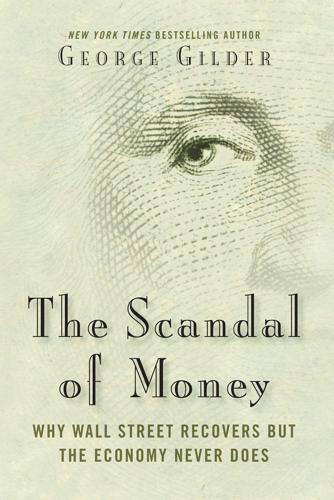
The Scandal of Money
by
George Gilder
Published 23 Feb 2016
Rather, the paper suggests that the rapid progress made over the past 250 years could well turn out to be a unique episode in human history.” Robert J. Gordon, “Is U.S. Economic Growth Over? Faltering Innovation Confronts the Six Headwinds,” working paper no. 18315, National Bureau of Economic Research, August 2012. In early 2016, Gordon expanded these themes into a widely touted and conscientious tome, The Rise and Fall of American Growth: The U.S. Standard of Living Since the Civil War (Princeton, NJ: Princeton University Press, 2016). Though full of intriguing insights, it finally founders on its mostly academic sources and becomes merely the most definitively and exhaustively mounted alibi for socialist slowdown.
…
Bogle astonishingly sees the culture of investment as index funds and the culture of speculation as actively managed capital. 5.Nassim Nicholas Taleb and Mark Spitznagel, blog post, Global Public Square, CNN, October 2012. 6.Ibid. 7.Robert Laughlin, A Different Universe (New York, NY: Basic Books, 2006). 8.Robert J. Gordon, The Rise and Fall of American Growth: The U.S. Standard of Living since the Civil War (Princeton, NJ: Princeton University Press, 2016). 9.Walter Bagehot, Lombard Street: A Description of the Money Market (London: Henry S. King, 1873), text available at the Library of Economics and Liberty, chapter I, paragraph 4 (http://www.econlib.org/library/Bagehot/bagLom1.html#).

The Rise and Fall of American Growth: The U.S. Standard of Living Since the Civil War (The Princeton Economic History of the Western World)
by
Robert J. Gordon
Published 12 Jan 2016
COPYRIGHT Copyright © 2016 by Princeton University Press Published by Princeton University Press, 41 William Street, Princeton, New Jersey 08540 In the United Kingdom: Princeton University Press, 6 Oxford Street, Woodstock, Oxfordshire OX20 1TW press.princeton.edu Jacket image: “Construction of a Dam,” by William Gropper. Oil on canvas, 1939. Jacket design: Faceout Studio, Kara Davison All Rights Reserved Library of Congress Cataloging-in-Publication Data Gordon, Robert J., author. The rise and fall of American growth : the U.S. standard of living since the Civil War / Robert J. Gordon. pages cm. — (The Princeton economic history of the Western world) Includes bibliographical references and index. ISBN 978-0-691-14772-7 (hardcover : alk. paper) — ISBN 0-691-14772-8 (hardcover : alk. paper) 1. Cost and standard of living—United States—History. 2.
…
Entr’acte THE MIDCENTURY SHIFT FROM REVOLUTION TO EVOLUTION The year 1940 marks the transition from part I to part II of the book. Like any dividing point, the choice of that year is arbitrary and is made because it falls roughly halfway between 1870 and 2015. A central theme of this book, as suggested by its title The Rise and Fall of American Growth, is that the pace of progress sped up in one era and slowed down in a subsequent era. Figure 1–1 makes this interpretation explicit, showing that the growth of output per person increased from an initial half-century (1870–1920) to a much faster rate in the subsequent half-century (1920–70) before slowing in the final period of almost half a century (1970–2014).
…
In those years, the positive growth in labor productivity of about 0.6 percent per year was almost exactly offset by negative growth in hours per person, resulting in zero growth in the trend of output per person. More than anything else, it is this sharp decline between 1999 and 2014 in trend growth of output per person that lies behind the title of this book, The Rise and Fall of American Growth. During the decade 2004–2014, the negative growth rate of hours per person was relatively flat at a rate of about –0.6 percent per year, so the decline in American growth was experienced in parallel by output per person and productivity (output per hour). The sharp decline in growth, especially in the last five-year interval 2010–14, does not appear in any government publication, for the growth rates plotted in the graph represent the hypothetical capability or “potential” of the economy to grow, abstracting from the effects of the business cycle—that is, when the unemployment rate is held constant.

Boom: Bubbles and the End of Stagnation
by
Byrne Hobart
and
Tobias Huber
Published 29 Oct 2024
In his 2011 book The Great Stagnation, economist Tyler Cowen identifies three pivotal developments that accelerated technological progress: the cultivation of land, the exploitation of 18th- and 19th-century scientific breakthroughs, and the increasing value of education. In his 2016 work The Rise and Fall of American Growth, economist Robert Gordon argues that the technological innovations that fueled economic growth from 1870 to 1970, such as electricity, sanitation, medical inventions, the internal combustion engine, and the telephone, are unrepeatable one-offs. In other words, the singularity has already happened—the fundamental transformations of the 19th and 20th centuries that unlocked nature’s secrets through scientific breakthroughs in physics, engineering, biology, and chemistry and enabled one-off productivity boosts were outliers.
…
What gets funded is what has worked. 58 Jason Farago, “Why Culture Has Come to a Standstill,” The New York Times, October 10, 2023, https://www.nytimes.com/2023/10/10/magazine/stale-culture.html. 59 Similar to the transformative economic growth that occurred in the period between 1870 and 1970—the “special century,” as Robert Gordon calls it—the modernist cultural event at the turn of the last century could constitute a singular and anomalous event in cultural history. Gordon, The Rise and Fall of American Growth (Princeton, NJ: Princeton University Press, 2016). 60 Marten Scheffer, Ingrid van de Leemput, Els Weinans, and Johan Bollen, “The Rise and Fall of Rationality in Language,” Proceedings of the National Academy of Sciences 118, no. 51 (2021): e2107848118. 61 Tristan Garca, The Life Intense: A Modern Obsession (Edinburgh: Edinburgh University Press Books, 2016). 62 David Graeber, “Of Flying Cars and the Declining Rate of Profit,” The Baffler, March 2012, https://thebaffler.com/salvos/of-flying-cars-and-the-declining-rate-of-profit. 63 “It is in this sense that America has become,” Baudrillard writes, the last remaining “primitive society of the future.”
…
Science 171, no. 3966 (1971): 23–29. Godin, Benôit. Innovation Contested: The Idea of Innovation Over the Centuries. New York: Routledge, 2015. Goldgar, Anne. Tulipmania: Money, Honor, and Knowledge in the Dutch Golden Age. Chicago: University of Chicago Press, 2007. Gordon, Robert. The Rise and Fall of American Growth. Princeton, NJ: Princeton University Press, 2016. “Government Investment on the Decline.” The FRED Blog, October 18, 2021. https://fredblog.stlouisfed.org/2021/10/government-investment-on-the-decline/. Graeber, David. “Of Flying Cars and the Declining Rate of Profit.” The Baffler, March 2012. https://thebaffler.com/salvos/of-flying-cars-and-the-declining-rate-of-profit.

Hit Refresh: The Quest to Rediscover Microsoft's Soul and Imagine a Better Future for Everyone
by
Satya Nadella
,
Greg Shaw
and
Jill Tracie Nichols
Published 25 Sep 2017
It is a bias for driving investment toward technological advancements in services like LinkedIn and Office that help people create, connect, and become more productive rather than software that is simply entertaining—memes for conspicuous consumption. Spillover effects on the economy are pretty limited for technologies that don’t foster a more equitable ratio of consumption to creation. Nonetheless, Wall Street has put a lot of value recently on these consumption technologies. Robert Gordon’s recent economic treatise, The Rise and Fall of American Growth, has as its central thesis that some inventions are more important than others. I agree, and I would put today’s productivity software in that category. Gordon examines American growth between 1870 and 1940, describing a century of economic revolution that freed households from an unremitting daily grind of painful manual labor, household drudgery, darkness, isolation, and early death.
…
Lastly, I want to thank Greg Shaw and Jill Tracie Nichols, my coauthors, for their partnership on this project—for encouraging me to pursue it, for helping me to craft it, and for working with me to make it as meaningful as possible. Sources and Further Reading Chapter 1 — From Hyderabad to Redmond Cornet, Manu. “Organizational Charts.” Bonkers World, June 27, 2011. Accessed December 8, 2016. http://www.bonkersworld.net/organizational-charts/. Gordon, Robert J. The Rise and Fall of American Growth: The U.S. Standard of Living since the Civil War. Princeton, NJ: Princeton University Press, 2016. Widmer, Ted. “The Immigration Dividend.” New York Times, October 6, 2015. Chapter 2 — Learning to Lead A Cloud for Global Good. Case study. Redmond, WA: Microsoft, 2016. Accessed December 12, 2016. http://news.microsoft.com/cloudforgood/.

Make Your Own Job: How the Entrepreneurial Work Ethic Exhausted America
by
Erik Baker
Published 13 Jan 2025
Lowry (Monterey, CA: Brooks/Cole, 1979), 1:59. 3Abraham Maslow, entry for August 3, 1964, Journal 5, Journals of A. H. Maslow: 385. 4Stephen A. Marglin and Juliet B. Schor, eds., The Golden Age of Capitalism: Reinterpreting the Postwar Experience (Oxford: Clarendon Press of Oxford University Press, 1992); Robert J. Gordon, The Rise and Fall of American Growth: The U.S. Standard of Living since the Civil War (Princeton, NJ: Princeton University Press, 2016), part II. 5Thomas J. Sugrue, The Origins of the Urban Crisis: Race and Inequality in Postwar Detroit (Princeton, NJ: Princeton University Press, 1996); Alice O’Connor, Poverty Knowledge: Social Science, Social Policy, and the Poor in Twentieth-Century U.S.
…
Elia, “Chemical Firms’ Debt Ratings Aren’t Likely to Be Downgraded, Bond Analyst Concludes,” Wall Street Journal, January 12, 1978, 33; Peter Drucker, Innovation and Entrepreneurship: Practice and Principles (New York: Harper, 1985), 1. On the downturn of the 1970s in historical perspective, see Robert Brenner, The Economics of Global Turbulence: The Advanced Capitalist Economies from Long Boom to Long Downturn, 1945–2005 (London: Verso, 2006); Robert E. Gordon, The Rise and Fall of American Growth (Princeton, NJ: Princeton University Press, 2016). 2Abraham Zaleznik, “Managers and Leaders: Are They Different?” reprinted in Harvard Business Review: On Human Relations (New York: Harper & Row, 1979), 164, 163, 169. 3Robert H. Hayes and William J. Abernathy, “Managing Our Way to Economic Decline,” Harvard Business Review (July/August 2007 [orig. 1980]), 139, 149.
…
See also Adam Tooze, Crashed: How a Decade of Financial Crises Changed the World (New York: Penguin, 2019); Lisa McCorkell and Sarah Hinkley, “The Post-Recession Labor Market: An Incomplete Recovery,” Institute for Research on Labor and Unemployment policy brief, University of California, Berkeley, March 25, 2019, https://irle.berkeley.edu/the-post-recession-labor-market-an-incomplete-recovery/. 2Lawrence H. Summers, “The Age of Secular Stagnation: What It Is and What to Do about It,” Foreign Affairs 95, no. 2 (2016): 2–9. See also Summers, “Demand Side Secular Stagnation,” American Economic Review 105, no. 5 (2015): 60–65. 3Robert J. Gordon, The Rise and Fall of American Growth: The U.S. Standard of Living since the Civil War (Princeton, NJ: Princeton University Press, 2016); Tyler Cowen, The Great Stagnation: How America Ate All the Low-Hanging Fruit of Modern History, Got Sick, and Will (Eventually) Feel Better (New York: Dutton, 2011). 4Fredric Jameson, Representing Capital: A Reading of Volume One (London: Verso, 2011), 2.

Rule of the Robots: How Artificial Intelligence Will Transform Everything
by
Martin Ford
Published 13 Sep 2021
The argument that we have been living in an age of relative stagnation—even as information technology has continued to accelerate—has been articulated at length by the economists Tyler Cowen, who published his book The Great Stagnation in 2011,64 and Robert Gordon, who sketches out a very pessimistic future for the United States in his 2016 book The Rise and Fall of American Growth.65 A key argument in both books is that the low-hanging fruit of technological innovation had been largely harvested by roughly the 1970s. The result is that we are now in a technological lull defined by a struggle to reach the higher branches of the innovation tree. Cowen is optimistic that we will eventually break free of our technological plateau.
…
Ray Kurzweil, “The Law of Accelerating Returns,” Kurzweil Library Blog, March 7, 2001, www.kurzweilai.net/the-law-of-accelerating-returns. 64. Tyler Cowen, The Great Stagnation: How America Ate All the Low-Hanging Fruit of Modern History, Got Sick, and Will (Eventually) Feel Better, Dutton, 2011. 65. Robert J. Gordon, The Rise and Fall of American Growth: The U.S. Standard of Living Since the Civil War, Princeton University Press, 2016. 66. Nicholas Bloom, Charles I. Jones, John Van Reenen and Michael Webb, “Are ideas getting harder to find?” American Economic Review, volume 110, issue 4, pp. 1104–1144 (April 2020), www.aeaweb.org/articles?

The Color of Money: Black Banks and the Racial Wealth Gap
by
Mehrsa Baradaran
Published 14 Sep 2017
Massey and Denton, American Apartheid, 126-140. 142. Economist Robert Gordon explains that blacks had lower life expectancy and often died of diseases because Jim Crow laws did not allow for sewage and water treatment in black areas. Infant mortality rates for blacks were double that for whites. Robert Gordon, The Rise and Fall of American Growth: The U.S. Standard of Living since the Civil War (Princeton, NJ: Princeton University Press, 2016), chaps. 7 and 16. 143. W. E. B. Du Bois, “A Negro Nation within a Nation," in African American Political Thought, 1890-1930, ed. Cary D. Wintz (New York: Taylor & Francis, 1996), 159-160. 144.
…
Modern research by Thomas Piketty, Robert Gordon, and others shows that the era from the New Deal until 1970 was an exceptional era of prosperity and wealth equality in American history. This boom was a temporary boost to middle-class wealth and standards of living. Thomas Piketty, Capital in the Twenty-First Century (Cambridge, MA: Harvard University Press, 2014); Robert J. Gordon, The Rise and Fall of American Growth: The U.S. Standard of Living since the Civil War (Princeton, NJ: Princeton University Press, 2016), 14. 114. National Archives, Executive Order 8802: Prohibition of Discrimination in the Defense Industry, June 25, 1941, https://www.ourdocuments.gov/doc.php?flash =false&doc=72. 115.
…
Paul Krugman, “Why We’re in a New Gilded Age," New York Review of Books, May 8, 2014; Joseph Stiglitz, “Inequality and Economic Growth," Political Quarterly 86 (2015), doi: 10.1111/1467-923X.12237; Paul Krugman, “Is Vast Inequality Necessary?," New York Times, January 15, 2016. 5. Robert Gordon, The Rise and Fall of American Growth: The U.S. Standard of Living since the Civil War (Princeton, NJ: Princeton University Press, 2016); Thomas Piketty, Capital in the Twenty-First Century (Cambridge, MA: Harvard University Press, 2014); McAdams, Economic Costs of Inequality, 22; Sitaraman, Crisis of the Middle Class Constitution. 6.
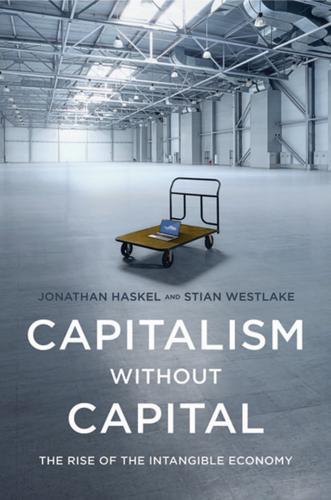
Capitalism Without Capital: The Rise of the Intangible Economy
by
Jonathan Haskel
and
Stian Westlake
Published 7 Nov 2017
Most memorably, he argued that technological progress might have slowed down, or, more specifically, that the economic benefit of new discoveries was less than had been the case in the past. The economist and economic historian Robert Gordon developed this theme in his influential 2016 book The Rise and Fall of American Growth, in which he argued that the inventions over the twentieth century, such as electricity, indoor plumbing, and the like, were part of “one big wave of innovation” that will not be repeated. This explanation for secular stagnation has proved controversial, not least because it turns out to be very difficult to measure whether technological progress has slowed down.
…
Economica (Dec). doi:10.1111/ecca.12219. Goos, Maarten, and Alan Manning. 2007. “Lousy and Lovely Jobs: The Rising Polarization of Work in Britain.” Review of Economics and Statistics 89 (1): 118–33. http://ideas.repec.org/a/tpr/restat/v89y2007i1p118-133.html. Gordon, Robert J. 2016. The Rise and Fall of American Growth: The U.S. Standard of Living since the Civil War. Princeton University Press. Graham, John R., Campbell R. Harvey, and Shiva Rajgopal. 2005. “The Economic Implications of Corporate Financial Reporting.” Journal of Accounting and Economics 40 (1): 3–73. doi:10.1016/j .jacceco.2005.01.002.

Fully Grown: Why a Stagnant Economy Is a Sign of Success
by
Dietrich Vollrath
Published 6 Jan 2020
It’s like we decided to stick to fifty-five miles per hour after getting free of the roadwork. This growth slowdown has not escaped the attention of, well, anyone with even a passing interest in economics. Robert Gordon’s recent history of economic growth in the United States is entitled The Rise and Fall of American Growth, not The Rise and Continued Pretty Good Rate of American Growth. You can find multiple stories on slow economic growth in past issues of the Wall Street Journal, the Economist, the Atlantic, the New York Times, and the Financial Times, just to name a few. During the 2016 Republican presidential primary, Jeb Bush made a campaign promise of achieving 4% growth in gross domestic product (GDP), something we haven’t seen in twenty years.
…
The Race between Education and Technology. Cambridge, MA: Harvard University Press. Goldschlag, N., and A. Tabarrok. 2018. “Is Regulation to Blame for the Decline in American Entrepreneurship?” Economic Policy 33 (93): 5–44. https://doi.org/10.1093/epolic/eix019. Gordon, R. J. 2016. The Rise and Fall of American Growth. Princeton, NJ: Princeton University Press. Gordon, R. J. 2018. “Declining American Economic Growth Despite Ongoing Innovation.” Explorations in Economic History 69:1–12. Greenwood, J., N. Guner, and G. Vandenbroucke. 2017. “Family Economics Writ Large.” Journal of Economic Literature 55 (4): 1346–1434.

The Upswing: How America Came Together a Century Ago and How We Can Do It Again
by
Robert D. Putnam
Published 12 Oct 2020
CHAPTER 2: ECONOMICS: THE RISE AND FALL OF EQUALITY 1 Steven Pinker, Enlightenment Now: The Case for Reason, Science, Humanism, and Progress (New York: Viking, 2018). The standard (and more nuanced) account of American technological change and economic progress is Robert J. Gordon, The Rise and Fall of American Growth: The U. S. Standard of Living Since the Civil War (Princeton: Princeton University Press, 2016). 2 Charles I. Jones, “The Facts of Economic Growth,” in Handbook of Macroeconomics, eds. John B. Taylor and Harald Uhlig, vol. 2A (Amsterdam: Elsevier, 2016), 3–69. Data from 1929 to the present come from NIPA Table 7.1, Line 10.
…
Kaldor wrote, “I suggest the following ‘stylized facts’ as a starting-point for the construction of theoretical models: The continued growth in the aggregate volume of production and in the productivity of labour at a steady trend rate; no recorded tendency for a falling rate of growth of productivity.” 5 Angus Deaton, The Great Escape: Health, Wealth, and the Origins of Inequality (Princeton: Princeton University Press, 2013) and Robert J. Gordon, The Rise and Fall of American Growth have offered abundant evidence for the post-1970 falloff in the long-term annual growth rate. 6 Maria Cecilia P. Moura, Steven J. Smith, and David B. Belzer, “120 Years of U.S. Residential Housing Stock and Floor Space,” August 11, 2015, PLOS ONE 10.1371/journal.pone.0134135; Stanley Lebergott, The American Economy: Income, Wealth and Want (Princeton: Princeton University Press, 2015); Sue Bowden and Avner Offer, “Household Appliances and the Use of Time: The United States and Britain Since the 1920s,” Economic History Review 47, no. 4 (1994): 725–48. 7 Transportation Energy Data Book, Edition 36, Office of Energy Efficiency and Renewable Energy, U.S.
…
Uslaner and Mitchell Brown, “Inequality, Trust, and Civic Engagement,” American Politics Research 33, no. 6 (2005): 868–894, doi:10.1177/1532673X04271903; and Keith Payne, The Broken Ladder: How Inequality Affects the Way We Think, Live, and Die (New York: Viking, 2017). 23 David Morris Potter, People of Plenty: Economic Abundance and the American Character (Chicago: University of Chicago Press, 1954). 24 See Tyler Cowen, The Great Stagnation: How America Ate All the Low-Hanging Fruit of Modern History, Got Sick, and Will (Eventually) Feel Better (New York: Dutton, 2011); and John L. Campbell, American Discontent: The Rise of Donald Trump and Decline of the Golden Age (Oxford: Oxford University Press, 2018). For a sophisticated and thoroughly documented argument about the effects of technological innovation and productivity (1920–1970), see Robert J. Gordon, The Rise and Fall of American Growth: The U.S. Standard of Living Since the Civil War (Princeton: Princeton University Press, 2016). 25 Sendhil Mullainathan and Eldar Shafir, Scarcity: Why Having Too Little Means So Much (New York: Times Books/Henry Holt, 2013). See also Benjamin Friedman, “The Moral Consquences of Economic Growth,” Society 43 (January/February 2006): 15–22. 26 E.

The Sirens' Call: How Attention Became the World's Most Endangered Resource
by
Chris Hayes
Published 28 Jan 2025
BACK TO NOTE REFERENCE 18 Simon, “Designing Organizations for an Information-Rich World,” 44. BACK TO NOTE REFERENCE 19 Robert M. Solow, “We’d Better Watch Out,” New York Times Book Review, July 12, 1987, p. 36. BACK TO NOTE REFERENCE 20 Robert J. Gordon, The Rise and Fall of American Growth (Princeton, NJ: Princeton University Press, 2016): 575. Kindle Edition. BACK TO NOTE REFERENCE 21 Economic historian Robert Gordon writes that while the rapid mass industrialization that followed the Civil War produced a century “of revolution in the United States” that liberated “households from an unremitting daily grind of painful manual labor, household drudgery, darkness, isolation, and early death…economic growth since 1970 has been simultaneously dazzling and disappointing.
…
BACK TO NOTE REFERENCE 21 Economic historian Robert Gordon writes that while the rapid mass industrialization that followed the Civil War produced a century “of revolution in the United States” that liberated “households from an unremitting daily grind of painful manual labor, household drudgery, darkness, isolation, and early death…economic growth since 1970 has been simultaneously dazzling and disappointing. This paradox is resolved when we recognize that advances since 1970 have tended to be channeled into a narrow sphere of human activity having to do with entertainment.” Gordon, The Rise and Fall of American Growth, 2. BACK TO NOTE REFERENCE 22 “Link Best Practices for Google,” Google, updated December 20, 2023, accessed February 3, 2024, https://developers.google.com/search/docs/crawling-indexing/links-crawlable. BACK TO NOTE REFERENCE 23 “About Google,” Google, accessed January 28, 2024, https://about.google/.
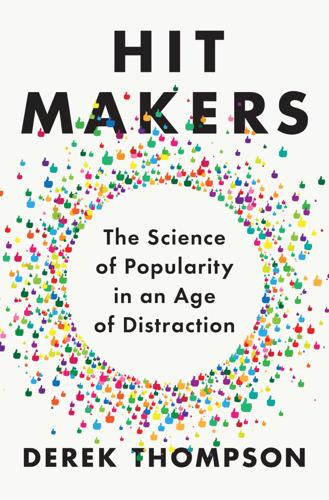
Hit Makers: The Science of Popularity in an Age of Distraction
by
Derek Thompson
Published 7 Feb 2017
twenty-five thousand people downloaded the app: Kara Swisher, “The Money Shot,” Vanity Fair, June 2013. movie industry was the third-largest retail business: Edward Jay Epstein, The Big Picture: Money and Power in Hollywood (New York: Random House, 2005), 6. more than five hours watching: Robert Gordon, The Rise and Fall of American Growth: The U.S. Standard of Living Since the Civil War (Princeton, NJ: Princeton University Press, 2016). fell from about twenty-five in 1950 to four in 2015: Barak Y. Orbach and Liran Einav, “Uniform Prices for Differentiated Goods: The Case of the Movie-Theater Industry,” International Review of Law and Economics 27 (2007): 129–53.
…
Hartman Center for Sales, Advertising & Marketing History, Duke University, Durham, North Carolina, May 17–20, 2001; also see Boris Doktorov, “George Gallup: Biography and Destiny” (Moscow, 2011). surveys, a measure of the present, and polls, a measure of the future: Lepore, “Politics and the New Machine.” from living room curiosity to household ubiquity: Robert Gordon, The Rise and Fall of American Growth: The U.S. Standard of Living since the Civil War (Princeton, NJ: Princeton University Press, 2016); also see James L. Baughman, “Television Comes to America, 1947–57,” Illinois History, March 1993, www.lib.niu.edu/1993/ihy930341.html. “far more fascinating, far more varied”: David R.
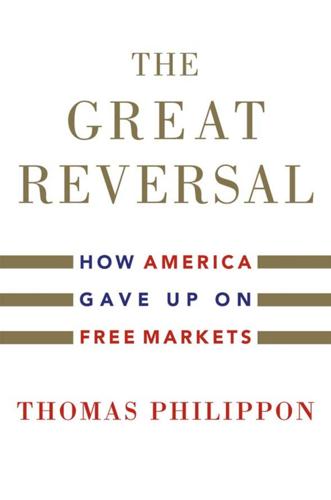
The Great Reversal: How America Gave Up on Free Markets
by
Thomas Philippon
Published 29 Oct 2019
FISHER, PROFESSOR OF PATHOLOGY, ADDRESSING A SUBCOMMITTEE OF THE US HOUSE OF REPRESENTATIVES IN 1978 If economists are to be of any use to society—a big “if,” some critics might add—then at the very least they should be able to challenge common wisdom, to take a contrarian perspective, and to avoid repeating what everyone else is saying. This is what I find so remarkably refreshing in Robert Gordon’s The Rise and Fall of American Growth. Contrary to the techno-optimists arguing that innovation has never been faster, Bob argues that our current wave of innovation is not nearly as transformative as previous waves have been. Bob may or may not be right, but he is willing to think coherently about a topic and base his conclusions on data and logic instead of anecdotes and preconceived ideas.
…
Katz (2008). Transitions: Career and family lifecycles of the educational elite. American Economic Review 98(2), 363–369. Goldschlag, N., and A. Tabarrok (2018). Is regulation to blame for the decline in American entrepreneurship? Economic Policy 33(93), 5–44. Gordon, R. J. (2016). The Rise and Fall of American Growth. Princeton: Princeton University Press. Greenwood, J., and J. Dreger (2013). The transparency register: A European vanguard of strong lobby regulation? Interest Groups & Advocacy 2(2), 139–162. Greenwood, R., and D. Scharfstein (2013). The growth of finance. Journal of Economic Perspectives 27(2), 3–28.

Growth: A Reckoning
by
Daniel Susskind
Published 16 Apr 2024
Figure 1: 10-year average growth rate of real GDP per capita2 With these numbers in mind, it is unsurprising that leading economists have been pessimistic about our prospects for more than a decade. Tyler Cowen, in his 2011 book The Great Stagnation, wrote that, ‘life is better and we have more stuff, but the pace of change has slowed down compared to what people saw two or three generations ago.’3 Robert Gordon, in his 2016 The Rise and Fall of American Growth, made the case that ‘future growth will be slower than in the past.’4 Dietrich Vollrath, in his 2020 book Fully Grown, explained how a slowdown in American growth ‘has forced economists and policy makers to recalibrate their expectations of how fast the economy will grow in the future’.5 Larry Summers spent the 2010s resuscitating Alvin Hansen’s old idea of ‘secular stagnation’, where a country gets stuck in a low-growth rut, in order to explain why anaemic economic progress was plaguing many parts of the world.
…
Unleashing Growth 1 See Dietrich Vollrath, Fully Grown: Why a Stagnant Economy is a Sign of Success (London: Chicago University Press, 2020), Chapter 2 and p. 218 for a discussion of this approach. 2 Data from Penn World Tables, Volume 10. This is an updated version of Figure 2.4 in Vollrath, Fully Grown, calculated using the strategy on p. 218. 3 Tyler Cowen, The Great Stagnation (Boston, MA: E.P Dutton, 2011), Introduction. 4 Robert Gordon, The Rise and Fall of American Growth (Princeton, NJ: Princeton University Press, 2016), p. 23. 5 Vollrath, Fully Grown, p. vii. 6 Data from Penn World Tables, Volume 10. This is an updated version of Figure 2.4 in Vollrath, Fully Grown, calculated using the strategy on p. 218. 7 Brad DeLong, Slouching towards Utopia (2022), pp. 3 and 5. 8 Paul Krugman, The Age of Diminished Expectations (MIT Press, 1997), quoted in ‘Productivity’, The Economist, 1 May 2008. 9 For better and worse.

The Price of Time: The Real Story of Interest
by
Edward Chancellor
Published 15 Aug 2022
The Northwestern economist lamented that the digital revolution ‘provided new opportunities for consumption on the job and in leisure hours rather than a continuation of the historical tradition of replacing human labor with machines’.18 Gordon’s concerns recall a famous comment made by MIT economist Bob Solow in 1987, that ‘you can see the computer age everywhere but in the productivity statistics.’ The Nobel laureate Solow spoke too soon. Not long afterwards US productivity growth picked up, assisted presumably by advances in information technology. As Gordon’s book The Rise and Fall of American Growth went to press in early 2016 (its publication facilitated by digital technologies), the internet continued to disrupt countless industries while the media fanned fears of an impending ‘second machine age’, in which robots replace human workers. Gordon’s Northwestern colleague Joel Mokyr suggested that a ‘shortfall of imagination [is] largely responsible for much of today’s pessimism’.
…
Gordon, Josh, ‘Vancouver’s Housing Affordability Crisis: Cases, Consequences and Solutions’, Simon Fraser University, May 2016. Gordon, Robert J., ‘Is U.S. Economic Growth Over? Faltering Innovation Confronts the Six Headwinds’, NBER Working Paper, August 2012. Gordon, Robert J., The Rise and Fall of American Growth: The U.S. Standard of Living since the Civil War (Princeton, 2016). Goschen, George, ‘Seven Per Cent.’, Edinburgh Review, or Critical Journal, 121, January–April 1865: 223–51. Goschen, George, ‘Two per Cent.’, Edinburgh Review, or Critical Journal, 127, January–April 1868: 242–80.
…
See Dietrich Domanski et al., ‘Wealth Inequality and Monetary Policy’, BIS Quarterly Review, March 2016. 25. Robert Lenzner, ‘The Top 25 Hedge Fund Managers Earn More Than All the 500 Top CEOs Together’, Forbes, 6 August 2013. 26. Scheidel, Great Leveler, p. 420. 27. Robert J. Gordon, The Rise and Fall of American Growth: The U.S. Standard of Living since the Civil War (Princeton, 2016), p. 616. 28. Since the early 1980s the skills premium and top 1 per cent of income share have both moved in the same direction. However, the fit between the rise in the skills premium and movements in household wealth is not as tight as between the 1 per cent income share and household wealth. 29.

Slouching Towards Utopia: An Economic History of the Twentieth Century
by
J. Bradford Delong
Published 6 Apr 2020
Ragin in the older tales before Wagner. See Stephan Grundy, Rhinegold, New York: Bantam, 1994, 47–63, 332–333. 8. For the technological history from 1700 to 1945, the best thing, for me at least, remains David Landes, The Unbound Prometheus, Cambridge: Cambridge University Press, 1969. 9. Robert Gordon, The Rise and Fall of American Growth: The U.S. Standard of Living Since the Civil War, Princeton, NJ: Princeton University Press, 2017, 61. 10. Donald Sassoon, One Hundred Years of Socialism: The West European Left in the Twentieth Century, New York: New Press, 1996, xxxiii. Note that Sassoon does not especially like this transformation of the revolutionary idea into a celebration of the wonders of technology. 11.
…
Tawney, Karl Polanyi, E. P. Thompson, and the Critique of Capitalism, Princeton, NJ: Princeton University Press, 2017. 4. Joan Robinson, The Cultural Revolution in China, New York: Penguin, 1967; Jan Myrdal, Report from a Chinese Village, New York: Pantheon Books, 1965. 5. Robert Gordon, The Rise and Fall of American Growth: The U.S. Standard of Living Since the Civil War, Princeton, NJ: Princeton University Press, 2017. 6. William Nordhaus, Retrospectives on the 1970s Productivity Slowdown, Cambridge, MA: National Bureau of Economic Research, 2004. 7. The extent to which Nixon and Kissinger approved of the oil price tripling (because, trying to play eleven-dimensional chess, they thought that higher oil prices would benefit the United States by giving the Iranian shah, Mohammed Reza Pahlavi, money with which to purchase weapons and annoy the Soviet Union) is something I have never been able to run down satisfactorily.
…
Marc Levinson, The Box: How the Shipping Container Made the World Smaller and the World Economy Bigger, Princeton, NJ: Princeton University Press, 2008. 4. David S. Landes, The Unbound Prometheus: Technological Change and Industrial Development in Western Europe from 1750 to the Present, Cambridge, UK: Cambridge University Press, 1969; Robert S. Gordon, The Rise and Fall of American Growth: The U.S Standard of Living since the Civil War, Princeton, NJ: Princeton University Press, 2016. 5. Elhanan Helpman, General Purpose Technologies and Economic Growth, Cambridge, MA: MIT Press, 1998. 6. Paul E. Ceruzzi, Computing: A Concise History, Cambridge, MA: MIT Press, 2012. 7.
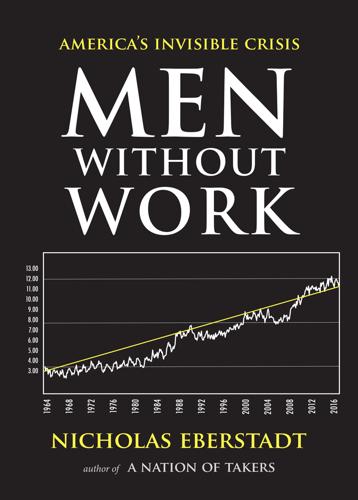
Men Without Work
by
Nicholas Eberstadt
Published 4 Sep 2016
It is possible that the anemic state of the U.S. macroeconomy is being exaggerated by measurement issues—productivity improvements from information technology, for example, have been oddly elusive in our officially reported national output—but few today imagine that such concealed gains would totally transform our view of the real economy’s true performance. 4.Carmen M. Reinhart and Kenneth S. Rogoff, “Recovery from Financial Crises: Evidence from 100 Episodes,” American Economic Review: Papers and Proceedings 104, no. 5: 50–55. http://scholar.harvard.edu/files/rogoff/files/aer_104-5_50-55.pdf. 5.Cf. Robert J. Gordon, The Rise and Fall of American Growth: The U.S. Standard of Living since the Civil War (Princeton, NJ: Princeton University Press, 2016); see for example, Lawrence H. Summers, “U.S. Economic Prospects: Secular Stagnation, Hysteresis, and the Zero Lower Bound,” Business Economics 49, no. 2: 65–73. 6.August 2016 projections for 2016–2026 by Congressional Budget Office anticipates full potential growth for U.S.

Head, Hand, Heart: Why Intelligence Is Over-Rewarded, Manual Workers Matter, and Caregivers Deserve More Respect
by
David Goodhart
Published 7 Sep 2020
There is an extraordinary amount of magical thinking about the beneficial impact of higher education on productivity, economic growth, and social mobility; Alison Wolf compares it to the Soviet Union’s irrational belief in capital goods.38 In fact, all of these things have been stagnating in the years that university enrollments have been roaring ahead. (In 2017 an average of 44 percent of twenty-five- to thirty-four-year-olds in OECD countries had a higher education qualification.)II The American economist Robert J. Gordon, in his book The Rise and Fall of American Growth, even says that innovation has been nose-diving in the era when there has never been more investment in research universities. Productivity has been in particularly sharp decline in those parts of the economy that are graduate dominated. And some analysis even sees professional bureaucratization stemming from mass higher education as an active drag on productivity.39 Moreover, higher education has done nothing to reduce inequality, and, as Wolf suggests, its expansion in recent decades may actually be one cause of our political divides.
…
S., 93 emotional intelligence (EQ), 13, 67, 71, 137–38, 168, 233, 237–38, 257–58, 299 Employer Skills Survey (UK), 198 Engels, Friedrich, The Condition of the Working Class in England, 33 England, see United Kingdom (UK) Enlightenment, 40, 42, 45, 48 eugenics, 63–64, 73 European Union (EU): popularity of, 167 see also Brexit Britain and names of specific countries EY, 271 Facebook, xiii, 16, 33, 273 family background: assortative mating and, 79–83 cognitive class and, 48, 115, 118, 125–26, 156 family breakdown and, 220, 221–25, 292–93 meritocracy vs., 6–9, 41, 77, 115, 118, 125–26, 156 socioeconomic status and cognitive aptitude, 78–82, 83–84 family policy, 161, 163 Fidoe, Ed, 300 Fletcher, Jason, 83 Florida, Richard, 224n Flynn, James, 6, 63, 67–68 Flynn effect, 6, 63, 67–68 Fortnite (computer game), 195 France: apprenticeships in, 117 baccalauréat and, 35, 117–18 decline of skilled workers, 139, 198 elite selection method, 66 Exposition Universelle (Paris, 1867), 46–47 geographic mobility and, 18, 288 higher education system, 44, 48, 53, 81, 102–4, 110, 117–18, 120, 126, 141, 156 professions/professional exams, 44 social mobility research in, 81 vocational training in, 117–18 Frank, Robert J., The Winner-Take-All Society (with Cook), 142 Franklin, Benjamin, 43 French, Marilyn, The Women’s Room, 247 Fried, Erich, 277 Friedan, Betty, 247 Fry, Martin “Mini,” 173 further education (FE) colleges (UK), 105–6, 108–10, 115 future: “Future of Work” transformation and, 143–44 of knowledge economy, 143–44, 253–74 need for cognitive diversity, 88–89, 281–84 of nursing, 232–42 rebalancing of Hand, Head, and Heart work, ix–xiii, 4–5, 20–29, 257–58, 275, 277–78, 284–301 of the university, 298 Gabbard, Keith, 290 Galton, Francis, 74n Gardner, Howard, 67 Gates, Bill, 33 gender: androgyny and, 223–24 assortative mating and, 79–83 cognitive class and, 32–33 Covid-19 crisis and, xii domesticity and, 27, 32–33, 226–32, 242–43, 293 feminism and, 79–80, 160–61, 224, 228–29, 231, 244, 247, 249 gender divide in status, 190–92, 213–14 gender equality and, 16, 32–33, 226 gender pay gap, 141, 152, 163 Hand (manual) work and, 190–94 Heart (care) work and, 4–5, 26–27, 226–32, 242–45, 249, 293–94 involved fathers, 243, 293 job status and, 190–92, 213–14 in knowledge economy, 151–52 #MeToo movement, 26 professional women and, 26 traditional masculinity and, 190–94, 243–44 General Certificates of Secondary Education (GCSEs, UK), 95–96, 141, 192, 198, 262 general intelligence (g), 56–71 measuring, 56, 61–71, see also IQ/IQ-type tests nature of, 57, 61, 62–63 geographic mobility, 17–19, 125–31, 273–74, 287–91 Germany: adult social care in, 218, 239 apprenticeships, 105, 112, 119–21, 198–99 decline of skilled workers, 139, 198 elite selection method, 66 geographic mobility and, 18, 288, 290 globalization and, 259 higher education system, 48, 50, 53, 102–4, 110, 117–21, 126, 156 immigration policy, 162 professions/professional exams, 44 social mobility research in, 81 vocational training in, 24, 35, 47, 117–19 Gest, Justin, The New Minority, 205 Gharbi, Musa al-, 283 GI Bill (1944, US), 43–44, 66, 96, 115 Gidron, Noam, 204 Gilens, Martin, 160 Gladwell, Malcolm, Outliers, 68 Glass-Steagall Act (1933, US), 284 globalization: centrifugal vs. centripetal forces and, x, 278 “Future of Work” transformation and, 143–44 Hand (manual) work and, 194–95, 198–206, 258–61 Head (cognitive) work and, 24, 258–62 hyper-globalization (Rodrik), ix lowest-cost approach and, x new version of, ix–x, 258–61 political cognitive domination and, 161–62, 175 training/retraining failure in developed countries, 111–17 world trade trends and, x see also immigration Goldie, Julie, 235–36 Goldin, Claudia, 117 Goldthorpe, John H., 75–76, 268, 269 Goleman, Daniel, 67 Goodman, David, 85n Google, 16, 33, 70 Gordon, Robert J., The Rise and Fall of American Growth, 122 Gottfredson, Linda, 57, 70–71 grammar school education, 46, 58, 65, 82, 98, 100 grandes écoles (France), 44, 48, 81, 102, 118, 141, 156 Gray, John, 166, 279 Great British Class Survey, 191, 191n great compression, 134 great divergence, 134–41 Green, Francis, 208–9 Greening, Justine, 17 grit (Duckworth), 67 groupthink, 20 Guilluy, Christophe, 126 Guyatt, Richard, 182 Hacker, Andrew, 82 Haidt, Jonathan: Heterodox Academy (US), 282–83 The Righteous Mind, 70 Hakim, Catherine, 248–49 Haldane, Andy, 255–58, 262, 298 Hall, Peter, 204 Hanbury, Jonathan, 238–39 Hand (manual) work, 189–215 Anywhere-Somewhere divide and, 12–20, 27 careers vs. jobs and, 211–12 Covid-19 crisis and, 7, 23, 26, 203, 277–78 craft skills, 114, 194, 195, 256–57, 294–96, 299–300, 301–2 decline of shop and home economics classes, 195–97 declining status of, 4–5, 13, 15, 189–95, 203–15 gender and, 190–94 globalization and, 194–95, 198–206, 258–61 immigration and, 194–95, 198–206 income divergence with Head (cognitive) work, 133–41 job/income decline and, 193–95, 199–200, 209, 210 new technologies in, 192, 198, 199 nostalgia for, 193, 194, 201–3 productivity in, 16–17 rebalancing with Head and Heart work, ix–xiii, 4–5, 20–29, 257–58, 275, 277–78, 284–301 as route to theoretical understanding, 196–97 scientific management and, 97, 260 separation from Head (cognitive) work, 97–99 skilled trades worker shortages, 15, 197–203 union membership decline and, 139–40 work satisfaction and, 208–11 see also apprenticeships Hankin, Steven M., 133, 142 happiness research, 11, 16–17, 220, 288, 302–3 Harari, Yuval Noah, 21, 36, 218–20, 299 Hardy, Thomas, Jude the Obscure, 47 Hargreaves, James, 42 Harrington, Mary, 248 Haskins, Ron, 82 Head (cognitive) work: Anywhere-Somewhere divide and, 12–20, 27 artificial intelligence (AI) and, 23–25 cognitive-analytical ability as gold standard of human esteem, 3–5, 11–12, 28 Covid-19 crisis and, 7, 23, 62, 277–78 crisis of meaning vs.
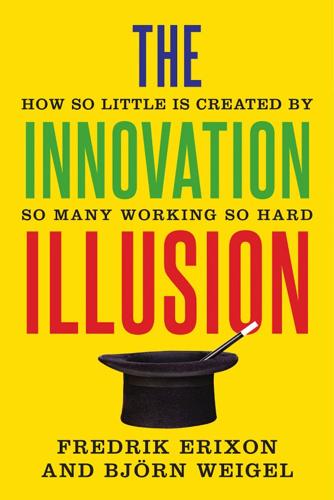
The Innovation Illusion: How So Little Is Created by So Many Working So Hard
by
Fredrik Erixon
and
Bjorn Weigel
Published 3 Oct 2016
15. 5.OECD, OECD Economic Outlook (2014), 224. 6.Maddison, “Confessions of a Chiffrephile,” 27. 7.Krugman, The Age of Diminishing Expectations. 8.See, for instance, Hall and Jones, “Why Do Some Countries Produce So Much More.” 9.See, for instance, Comin, Hobijn, and Rovito, “Five Facts You Need to Know.” 10.In Chapter 8 we will discuss the issue of mismeasurement of productivity and other economic indicators. 11.For the United States, the post-recovery spurt in TFP growth is due to a sharp increase in 2009 that turned the moving trend upward for later years. The actual rates of TFP growth in 2010–13 are smaller. 12.Gordon, “Is US Economic Growth Over?” offers a condensed version of Gordon’s productivity analysis. The full analysis of US living standards is in Gordon, The Rise and Fall of American Growth. 13.Gill and Raiser, Golden Growth, 12, fig. 5. 14.Cowen, The Great Stagnation. 15.OECD, “The Future of Productivity.” 16.Pellegrino and Zingales, “Diagnosing the Italian Disease.” 17.Altomonte et al., “Assessing Competitiveness.” 18.Navaretti et al., “The Global Operations of European Firms.” 19.Zingales, A Capitalism for the People, 5. 20.Leung and Rispoli, “The Distribution of Gross Domestic Product.” 21.Cardarelli and Lusinyan, “US Total Factor Productivity Slowdown.” 22.van der Marel, “The Importance of Complementary Policy.” 23.Cette, Fernald, and Mojon, “The Pre-Global-Financial-Crisis Slowdown.” 24.OECD, Skills Outlook 2013. 25.Base and Svioska, “Productivity Growth.” 26.McGowan and Andrews, “Labour Market Mismatch and Labour Productivity.” 27.Browne, “S&P 500 Firms Hoard Cash as CAPEX Declines.” 28.Krantz, “$194B!
…
American Economic Review, 105.5 (2015): 54–9. At http://dx.doi.org/10.1257/aer.p20151102. Gordon, Robert, “The Demise of US Economic Growth: Restatement, Rebuttal, and Reflections.” NBER Working Paper No. 19895. National Bureau of Economic Research, Feb. 2014. At http://www.nber.org/papers/w19895. Gordon, Robert J., The Rise and Fall of American Growth: The US Standard of Living since the Civil War. Princeton University Press, 2016. Grabowski, Henry G., and Ronald W. Hansen, “Cost of Developing a New Drug.” Briefing, Tufts University, Nov. 18, 2014. Graetz, Georg, and Guy Michaels, “Robots at Work.” CEP Discussion Paper No. 1335.

The Limits of the Market: The Pendulum Between Government and Market
by
Paul de Grauwe
and
Anna Asbury
Published 12 Mar 2017
. illustrates some aspects of this, showing average annual growth in productivity (production per hour of labour) in the US since . It is worth noting that the growth in productivity between and was around two per cent per year. Since then growth has dropped to less than . per cent per year. So far the digital revolution { See Robert Gordon’s fascinating recent book, The Rise and Fall of American Growth: The US Standard of Living since the Civil War (Princeton, NJ: Princeton University Press, ). T HE U TO PIA OF SE LF - RE GUL ATIO N of the s has had remarkably little observable effect on growth in productivity in the country where it began. This has led Robert Solow, the great American economist who won the Nobel Prize for his contribution to the theory of economic growth, to the conclusion that the new technologies are visible everywhere except in productivity growth statistics.

Water: A Biography
by
Giulio Boccaletti
Published 13 Sep 2021
When cold air: B. I. Cook et al., “Dust and Sea Surface Temperature Forcing of the 1930s ‘Dust Bowl’ Drought.” Rivers were the answer: Kitchens and Fishback, “Flip the Switch: The Impact of the Rural Electrification Administration, 1935–1940.” And they would be put to work: Gordon, The Rise and Fall of American Growth, 52. But her beginnings were in industrial photography: Vials, “The Popular Front in the American Century.” It looked like a massive defensive wall: Billington et al., The History of Large Federal Dams, 235. “nation, conceived in adventure”: Luce, “The American Century.”
…
Journal of Economic Perspectives 28 (Summer 2014): 71–88. Goosse, Hugues, O. Arzel, J. Luterbacher, M. E. Mann, H. Renssen, N. Riedwyl, A. Timmermann, E. Xoplaki, and H. Wanner. “The Origin of the European ‘Medieval Warm Period.’ ” Climate of the Past 2 (September 2006): 99–113. Gordon, Robert J. The Rise and Fall of American Growth. Princeton, NJ: Princeton University Press, 2016. Gray, Lesley J., J. Beer, M. Geller, J. D. Haigh, M. Lockwood, K. Matthes, U. Cubasch, D. Fleitmann, G. Harrison, L. Hood, J. Luterbacher, G. A. Meehl, D. Shindell, B. van Geel, and W. White. “Solar Influences on Climate.” Reviews of Geophysics 48 (October 2010): 1–53.

People, Power, and Profits: Progressive Capitalism for an Age of Discontent
by
Joseph E. Stiglitz
Published 22 Apr 2019
Besides, these techno-optimists claim, the pace of change has been exaggerated. Indeed, it doesn’t even show in the macro-data: productivity increases in recent years are significantly lower than in the 1990s, and in the decades after World War II. Robert Gordon of Northwestern University in his bestselling book The Rise and Fall of American Growth: The US Standard of Living Since the Civil War argues that the pace of innovation has actually slowed.2 Yes, we have Facebook and Google, but these innovations pale in comparison with the importance of electricity, or even indoor toilets and clean water that played such an important role in improving health and longevity.
…
See Choe Sang-Hun, “Google’s Computer Program Beats Lee Se-dol in Go Tournament,” New York Times, Mar. 15, 2016. A year and a half later, Google announced the release of a program with even larger AI capabilities. See Sarah Knapton, “AlphaGo Zero: Google DeepMind Supercomputer Learns 3,000 Years of Human Knowledge in 40 Days,” Telegraph, Oct. 18, 2017. 2.Robert J. Gordon, The Rise and Fall of American Growth: The US Standard of Living since the Civil War (Princeton: Princeton University Press, 2016). I should hasten to add that not all scholars agree with Gordon. Joel Mokyr, a distinguished economic historian, like Gordon at Northwestern University, takes a much more optimistic view. See, for instance, Joel Mokyr, “The Next Age of Invention: Technology’s Future Is Brighter than Pessimists Allow,” City Journal (Winter 2014): 12–20.

Adam Smith: Father of Economics
by
Jesse Norman
Published 30 Jun 2018
Davies, 1795–1815 Gintis, Herbert, Samuel Bowles, Robert Boyd and Ernst Fehr, Moral Sentiments and Material Interests: The Foundations of Cooperation in Economic Life, MIT Press 2005 Gjerstad, Steven D. and Vernon L. Smith, Rethinking Housing Bubbles: The Role of Household and Bank Balance Sheets in Modeling Economic Crises, Cambridge University Press 2014 Gordon, Robert J., The Rise and Fall of American Growth, Princeton University Press 2016 Graham, Benjamin, The Intelligent Investor, Harper & Bros. 1949 Greenberger, Martin (ed.), Computers, Communication, and the Public Interest, Johns Hopkins Press 1971 Griswold, Charles, Adam Smith and the Virtues of Enlightenment, Cambridge University Press 1999 Haakonssen, Knud (ed.), The Cambridge Companion to Adam Smith, Cambridge University Press 2006 Haakonssen, Knud, The Science of a Legislator: The Natural Jurisprudence of David Hume and Adam Smith, Cambridge University Press 1981 Hacker, Jacob S. and Paul Pierson, Winner-Take-All Politics: How Washington Made the Rich Richer—and Turned its Back on the Middle Class, Simon & Schuster 2010 Hanley, Ryan Patrick, Adam Smith and the Character of Virtue, Cambridge University Press 2009 Harris, James, Hume: An Intellectual Biography, Cambridge University Press 2015 Haskel, Jonathan and Stian Westlake, Capitalism without Capital: The Rise of the Intangible Economy, Princeton University Press 2017 Hayek, Friedrich, The Fatal Conceit, University of Chicago Press 1988 Henrich, Joseph, The Secret of our Success, Princeton University Press 2016 Hickok, Gregory, The Myth of Mirror Neurons, W.
…
Monks and Nell Minow, Power and Accountability, HarperCollins 1991, and Robert A. G. Monks, Corpocracy: How CEOs and the Business Roundtable Hijacked the World’s Greatest Wealth Machine—and How to Get It Back, John Wiley 2007 Arguments for falling rates of gain from technology: see Robert J. Gordon, The Rise and Fall of American Growth, Princeton University Press 2016 Absence of critique: debate on the nature of capitalism has been hugely reinvigorated by Thomas Piketty’s book Capitalism in the Twenty-First Century, Allen Lane 2014. In many ways rightly so, for it offers a very important analytical window into data on wealth and incomes, a simple but comprehensive theory of their long-term evolution and an overdue focus on the distributional consequences of the key trends involved.

Same as Ever: A Guide to What Never Changes
by
Morgan Housel
Published 7 Nov 2023
Roosevelt, “Campaign Address in Portland, Oregon on Public Utilities and Development of Hydro-Electric Power,” September 21, 1932, available at presidency.ucsb.edu/documents/campaign-address-portland-oregon-public-utilities-and-development-hydro-electric-power. GO TO NOTE REFERENCE IN TEXT Robert Gordon wrote: Robert Gordon, The Rise and Fall of American Growth (Princeton, NJ: Princeton University Press, 2016), 564. GO TO NOTE REFERENCE IN TEXT Richard Nixon once observed: JM, “The Purpose of Life: Nixon,” July 9, 2011, YouTube video, youtube.com/watch?v=Pc3IfB23W4c&ab_channel=JM. GO TO NOTE REFERENCE IN TEXT Entrepreneur Andrew Wilkinson: Andrew Wilkinson, @awilkinson, Twitter post, April 26, 2021, 8:07 a.m., twitter.com/awilkinson/status/1386698431905730565?

Energy: A Human History
by
Richard Rhodes
Published 28 May 2018
Clearing the Air: The Real Story of the War on Air Pollution. Washington, DC: Cato Institute, 1999. Goldstein, Eli (2012). “CO2 Emissions from Nuclear Plants.” Submitted as coursework for PH241, Introduction to Nuclear Energy, Stanford University, Winter 2012 (online). Gordon, Robert J. The Rise and Fall of American Growth: The U.S. Standard of Living Since the Civil War. Princeton, NJ: Princeton University Press, 2016. Graham, Gerald S. “The Migrations of the Nantucket Whale Fishery: An Episode in British Colonial Policy.” New England Quarterly 8, no. 2 (1935): 179–202. Graham, John W. The Destruction of Daylight: A Study of the Smoke Problem.
…
Barbier, “Introduction to the Environmental Kuznets Curve Special Issue,” Environment and Development Economics 2, no. 4 (November 1997): 372. 37. “Environmental amenities,” luxury model: J. Martínez-Alier, “The Environment as a Luxury Good or ‘Too Poor to Be Green’?” Ecological Economics 13 (1995): 1–10. 38. The Great Leap Forward: Robert J. Gordon, The Rise and Fall of American Growth: The U.S. Standard of Living Since the Civil War (Princeton, NJ: Princeton University Press, 2016), 535. 39. Robert Higgs, “Wartime Prosperity? A Reassessment of the U.S. Economy in the 1940s,” Journal of Economic History 52, no. 1 (1992): 57, quoted in Gordon, Rise and Fall of American Growth, 552.

Material World: A Substantial Story of Our Past and Future
by
Ed Conway
Published 15 Jun 2023
Cullen, Sustainable Materials: With Both Eyes Open (UIT Cambridge, 2012), http://publications.eng.cam.ac.uk/400536/ . 9 Daniel E. Sichel, ‘The Price of Nails since 1695: A Window into Economic Change’, Journal of Economic Perspectives 36/1 (2022): pp. 125–50. 10 Robert J. Gordon, The Rise and Fall of American Growth: The US Standard of Living since the Civil War (Princeton University Press, 2017); Marc Levinson, The Box: How the Shipping Container Made the World Smaller and the World Economy Bigger (Princeton University Press, 2016). 11 Tom Standage, A Brief History of Motion: From the Wheel to the Car to What Comes Next (Bloomsbury, 2021). 12 Steven Watts, The People’s Tycoon: Henry Ford and the American Century (Vintage, 2009). 13 World Steel Association, The White Book of Steel (World Steel Association, 2012). 14 Julian M.
…
-L. and Martin, G., Liquid Stone: New Architecture in Concrete (Princeton Architectural Press, 2006) Copeland, D.C., Economic Interdependence and War (Princeton University Press, 2014) Courland, R., Concrete Planet: The Strange and Fascinating Story of the World’s Most Common Man-Made Material (Prometheus, 2011) Coyle, D., The Weightless World: Strategies for managing the digital economy (Capstone, 1997) Coyle, D., GDP: A Brief but Affectionate History (Princeton University Press, 2015) Crathorne, N., Eliot (Baroness of Harwood), K. and Dugdale, J., Tennant’s Stalk: The Story of the Tennants of the Glen (Macmillan, 1973) Dartnell, L., The Knowledge: How to Rebuild our World from Scratch (The Bodley Head, 2014) Dartnell, L., Origins: How the Earth Shaped Human History (Vintage Digital, 2019) Edgerton, D., The Shock of the Old: Technology and Global History Since 1900 (Profile, 2008) Ehrlich, P.R., The Population Bomb (Ballantine, 1989) Fletcher, S., Bottled Lightning: Superbatteries, Electric Cars, and the New Lithium Economy (Hill & Wang, 2011) Freinkel, S., Plastic: A Toxic Love Story (Mariner, 2011) Friedel, R. and Israel, P.B., Edison’s Electric Light: The Art of Invention (Johns Hopkins University Press, 2010) Gates, B., How to Avoid a Climate Disaster: The Solutions We Have and the Breakthroughs We Need (Penguin, 2021) Gertner, J., The Idea Factory: Bell Labs and the Great Age of American Innovation (Penguin, 2013) Golding, B. and Golding, S.D., Metals, Energy and Sustainability (Springer, 2017) Gordon, J.E., The New Science of Strong Materials: Or Why You Don’t Fall Through the Floor (Penguin, 1991) Gordon, R.J., The Rise and Fall of American Growth: The U.S. Standard of Living since the Civil War (Princeton University Press, 2017) Guevara, E.C., The Motorcycle Diaries , trans. Che Guevara Studies Center (Penguin, 2021) Gustafson, T., Wheel of Fortune: The Battle for Oil and Power in Russia (Belknap Press of Harvard University Press, 2012) Hager, T., The Alchemy of Air: A Jewish Genius, a Doomed Tycoon, and the Scientific Discovery That Fed the World but Fueled the Rise of Hitler (Crown, 2008) Hall, C.A.S. and Klitgaard, K., Energy and the Wealth of Nations (Springer, 2018) Hartcup, G., War of Invention (Brassey’s, 1988) Haskel, J. and Westlake, S., Capitalism without Capital: The Rise of the Intangible Economy (Princeton University Press, 2017) Hecht, J., City of Light: The Story of Fiber Optics (Oxford University Press, 1999) Higgins, T., Power Play: Elon Musk, Tesla, and the Best of the Century (WH Allen, 2021) Higginson, J., A Working Class in the Making: Belgian Colonial Labor Policy, Private Enterprise, and the African Mineworker, 1907–1951 (University of Wisconsin Press, 1989) Hochschild, A., King Leopold’s Ghost: A Story of Greed, Terror and Heroism in Colonial Africa (Picador, 2019) Hochschild, A., To End All Wars: A Story of Protest and Patriotism in the First World War (Picador, 2011) Hughes, T.P.P., Networks of Power: Electrification in Western Society, 1880–1930 (Johns Hopkins University Press, 1993) Hyde, C.K., Copper for America: The United States Copper Industry from Colonial Times to the 1990s (University of Arizona Press, 2016) Israel, P., Edison: A Life of Invention (Wiley, 1998) Johnson, S., How We Got to Now: Six Innovations That Made the Modern World (Penguin, 2015) Jones, R.A.L., Soft Machines: Nanotechnology and Life (Oxford University Press, 2007) Jonnes, J., Empires of Light: Edison, Tesla, Westinghouse, and the Race to Electrify the World (Random House, 2004) Joralemon, I.B., Romantic Copper: Its Lure and Lore (D.

WTF?: What's the Future and Why It's Up to Us
by
Tim O'Reilly
Published 9 Oct 2017
“In order to fully reap the benefits of a changing economy—and sustain growth over the long-term—businesses will need to increase the earnings potential of the workers who drive returns, helping the employee who once operated a machine learn to program it,” he writes. They “must improve their capacity for internal training and education to compete for talent in today’s economy and fulfill their responsibilities to their employees.” The Rise and Fall of American Growth, Robert J. Gordon’s magisterial history of the change in the US standard of living since the Civil War, makes a compelling case that after a century of extraordinary expansion, the growth of productivity in the US economy slowed substantially after 1970. Whether Gordon’s analysis that the productivity-enhancing technologies of the previous century gave the economy a historically anomalous surge, or whether Fink and others are right that we simply aren’t making the investments we need, it is clear that companies are using stock buybacks to create the illusion of growth where real growth is lagging.
…
Meckling, “Theory of the Firm: Managerial Behavior, Agency Costs and Ownership Structure,” Journal of Financial Economics 3, no. 4 (1976), http://dx.doi.org/10.2139/ssrn.94043. 241 sold or shuttered: Jack Welch, “Growing Fast in a Slow-Growth Economy,” Appendix A in Jack Welch and John Byrne, Jack: Straight from the Gut (New York: Warner Books, 2001). 242 “above which repurchases will be eschewed”: Warren Buffett, “Berkshire Hathaway Shareholder Letters: 2016,” Berkshire Hathaway, February 25, 2017, http://berkshirehathaway.com/letters/2016ltr.pdf. 243 “fulfill their responsibilities to their employees”: Larry Fink, “I write on behalf of our clients . . . ,” BlackRock, January 24, 2017, https://www.blackrock.com/corporate/en-us/investor-relations/larry-fink-ceo-letter. 243 growth of productivity in the US economy slowed substantially after 1970: Robert J. Gordon, The Rise and Fall of American Growth (Princeton, NJ: Princeton University Press, 2016). 244 half of all Americans are shareholders in any form: Justin McCarthy, “Little Change in Percentage of Americans Who Own Stocks,” Gallup, April 22, 2015, http://www.gallup.com/poll/182816/little-change-percentage-americans-invested-market.aspx. 244 outperforms both its publicly traded competitors and the entire S&P 500 retail index: Kyle Stock, “REI’s Crunchy Business Model Is Crushing Retail Competitors,” Bloomberg, March 27, 2015, https://www.bloomberg.com/news/articles/2015-03-27/rei-s-crunchy-business-model-is-crushing-retail-competitors. 244 from money managers to its customers: “Why Ownership Matters,” Vanguard, retrieved April 4, 2017, https://about. vanguard.com/what-sets-vanguard-apart/why-ownership-matters/. 245 an astonishing $3.4 trillion on stock buybacks: William Lazonick, “Stock Buybacks: From Retain-and-Reinvest to Downsize-and-Distribute,” Brookings Center for Effective Public Management, April 2015, https://www.brook ings.edu/wp-content/uploads/2016/06/lazonick.pdf. 245 “investment in productive assets”: Ibid., 4. 245 “distributes corporate cash to shareholders”: Ibid., 2. 246 “social rate of return” from innovation: Charles Jones and John Williams, “Measuring the Social Return to R&D,” Federal Reserve Board of Governors, February 1997, https://www.federalreserve. gov/pubs/feds/1997/199712/199712 pap.pdf. 246 “not the golden goose itself”: Ashish Arora, Sharon Belenzon, and Andrea Patacconi, “Killing the Golden Goose?

Humans as a Service: The Promise and Perils of Work in the Gig Economy
by
Jeremias Prassl
Published 7 May 2018
Martin Sandbu, ‘The problem is not too many robots, but too few’, Financial Times (4 April 2017), http://www.ft.com/content/bcb600d4–1870–11e7-a53d- df09f373be87, archived at https://perma.cc/QCX5-4K6N 70. See, e.g., Paul Krugman, ‘Robot geometry (very wonkish)’, Financial Times (20 March 2017), https://krugman.blogs.nytimes.com/2017/03/20/robot-geome- try-very-wonkish, archived at https://perma.cc/KGF7-YKRS; Robert Gordon, The Rise and Fall of American Growth (Princeton University Press 2016). 71. Uber contests these allegations: Mike Isaac, ‘How Uber deceives the authorities worldwide’, The New York Times (3 March 2017), http://www.nytimes. com/2017/03/03/technology/uber-greyball-programme-evade-authorities. html?_r=1, archived at https://perma.cc/G48X-RUV7; Julia Carrie Wong, ‘Greyball: how Uber used secret software to dodge the law’, The Guardian (4 March 2017), http://www.theguardian.com/technology/2017/mar/03/uber- secret-programme-greyball-resignation-ed-baker, archived at https://perma.

Cogs and Monsters: What Economics Is, and What It Should Be
by
Diane Coyle
Published 11 Oct 2021
Glaeser, E., and J. A. Scheinkman, 2000, ‘Non-market Interactions’, NBER Working Paper 8053, National Bureau of Economic Research, Cambridge, MA. Goodhart, C.A.E., 1975, ‘Problems of Monetary Management: The U.K. Experience’, Papers in Monetary Economics (1). Gordon, Robert, 2016, The Rise and Fall of American Growth: The US Standard of Living Since the Civil War, Princeton, NJ: Princeton University Press. Gould, S., 2003, The Hedgehog, the Fox, and the Magister’s Pox, Cambridge, MA: Harvard University Press. Graaff, J. de V., 1971, Theoretical Welfare Economics, Cambridge: Cambridge University Press, 1971, first published in 1957.

Open: The Progressive Case for Free Trade, Immigration, and Global Capital
by
Kimberly Clausing
Published 4 Mar 2019
Journal of Economic Perspectives 27:3 (2013), 103–123. 15. See Bonica et al., “Why Hasn’t Democracy,” for evidence on political contributions and income concentration as well as the increasing importance of the top 0.01 percent and large donors in driving political campaign funding. 16. See Robert J. Gordon, The Rise and Fall of American Growth: The US Standard of Living since the Civil War (Princeton: Princeton University Press, 2016), 624–625. 17. See Anya Kamenetz and Cory Turner, “The High School Graduation Rate Reaches a Record High—Again,” NPR Oregon Public Broadcasting, October 17, 2016. 18. National Center for Education Statistics, “International Educational Attainment,” May 2016. 19.

The Great Leveler: Violence and the History of Inequality From the Stone Age to the Twenty-First Century
by
Walter Scheidel
Published 17 Jan 2017
Goodin, Robert E., and Dryzek, Jon. 1995. “Justice deferred: wartime rationing and post-war welfare policy.” Politics and Society 23: 49–73. Goos, Maarten, and Manning, Alan. 2007. “Lousy and lovely jobs: the rising polarization of work in Britain.” Review of Economics and Statistics 89: 118–133. Gordon, Robert J. 2016. The rise and fall of American growth: the U.S. standard of living since the Civil War. Princeton, NJ: Princeton University Press. Gottfried, Robert S. 1983. The Black Death: natural and human disaster in medieval Europe. New York: Free Press. Graeber, David. 2011. Debt: the first 5,000 years. Brooklyn, NY: Melville House.
…
McLean Cities of Commerce: The Institutional Foundations of International Trade in the Low Countries, 1250–1650 by Oscar Gelderblom Lending to the Borrower from Hell: Debt, Taxes, and Default in the Age of Philip II by Mauricio Drelichman and Hans-Joachim Voth Power to the People: Energy in Europe over the Last Five Centuries by Astrid Kander, Paolo Malanima, and Paul Warde Fragile by Design: The Political Origins of Banking Crises and Scarce Credit by Charles W. Calomiris and Stephen H. Haber The Son Also Rises: Surnames and the History of Social Mobility by Gregory Clark Why Did Europe Conquer the World? by Philip T. Hoffman The Rise and Fall of American Growth: The U.S. Standard of Living since the Civil War by Robert J. Gordon Unequal Gains: American Growth and Inequality since 1700 by Peter H. Lindert and Jeffrey G. Williamson Brazil in Transition: Beliefs, Leadership, and Institutional Change by Lee J. Alston, Marcus André Melo, Bernardo Mueller, and Carlos Pereira The Great Leveler: Violence and the History of Inequality from the Stone Age to the Twenty-First Century by Walter Scheidel

The Complacent Class: The Self-Defeating Quest for the American Dream
by
Tyler Cowen
Published 27 Feb 2017
Journal of Economic History 58, no. 2 (1998): 345–74. Goldstein, Robert Justin. Political Repression in Modern America: From 1870 to the Present. Cambridge, MA: Schenkman Publishing, 1979. Goodin, Dan. “Beware of Ads That Use Inaudible Sound to Link Your Phone, TV, Tablet, and PC.” Ars Technica, November 13, 2015. Gordon, Robert J. The Rise and Fall of American Growth: The U.S. Standard of Living since the Civil War. Princeton, NJ: Princeton University Press, 2016. Graeber, David. The Utopia of Rules: On Technology, Stupidity, and the Secret Joys of Bureaucracy. Brooklyn: Melville House, 2015. Graif, Corina. “(Un)natural Disaster; Vulnerability, Long-Distance Displacement, and the Extended Geography of Neighborhood Distress and Attainment after Katrina.”
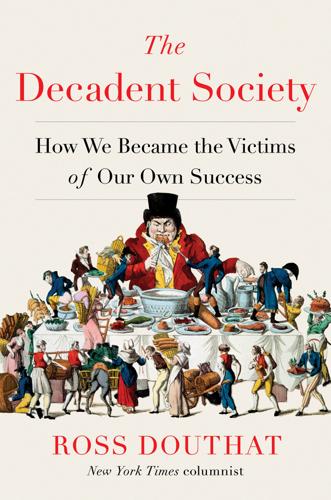
The Decadent Society: How We Became the Victims of Our Own Success
by
Ross Douthat
Published 25 Feb 2020
For the pessimists, the unusual features of the post-2007 landscape—the persistently low interest rates, the low rate of inflation, the disappointing rate of growth, the great fortunes parked in rent-seeking rather than risk-taking—are actually inevitabilities in a developed world where there just aren’t enough impressive enterprises to invest in; a developed world that inflates bubbles and then pops them (or invests in Theranos and then repents) because that’s all there is for capital to do; a developed world slowly growing accustomed to unexpected limits on its future possibilities. The most convincing theorists of limits include Cowen, in his 2011 book The Great Stagnation: How America Ate All the Low-Hanging Fruit of Modern History, Got Sick, and Will (Eventually) Feel Better, and his fellow economist Robert Gordon, in his magisterial 2016 work, The Rise and Fall of American Growth: The U.S. Standard of Living Since the Civil War. Both authors would agree with portions of the arguments I’ve just sketched about neoliberalism pushed too far or misapplied, and an economy stalled by inequality or captured by a self-dealing upper class. But both offer a wider lens on the developed world’s stagnation and a longer list of forces slowing growth.

The Journey of Humanity: The Origins of Wealth and Inequality
by
Oded Galor
Published 22 Mar 2022
Jones, Emma Lightfoot, Clive Bonsall, Catalin Lazar, Aurora Grandal-d’Anglade, María Dolores Garralda et al., ‘Paleogenomic evidence for multi-generational mixing between Neolithic farmers and Mesolithic hunter-gatherers in the lower Danube basin’, Current Biology 27, no. 12 (2017): 1801–10. Goody, Jack, Technology, Tradition and the State in Africa, Oxford University Press, 1971. Reprint, Routledge, 2018. Gordon, Robert J., The Rise and Fall of American Growth: The US standard of living since the civil war, Vol. 70, Princeton University Press, 2017. Gorodnichenko, Yuriy, and Gerard Roland, ‘Culture, Institutions, and the Wealth of Nations’, Review of Economics and Statistics 99, no. 3 (2017): 402–16. Grande, James, and John Stevenson, The Opinions of William Cobbett, Routledge, 2017.
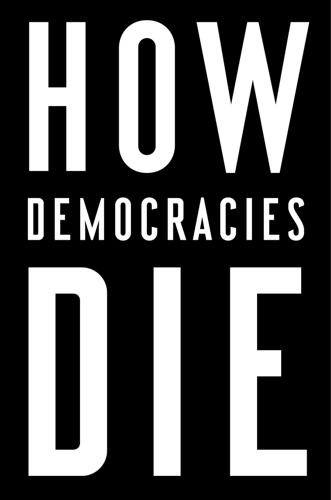
How Democracies Die
by
Steven Levitsky
and
Daniel Ziblatt
Published 16 Jan 2018
“The simple fact of the matter”: Danielle Allen, “Charlottesville Is Not the Continuation of an Old Fight. It Is Something New,” Washington Post, August 13, 2017. The intensity of partisan animosities: Thomas Piketty, Capital in the Twenty-First Century (Cambridge, MA: Harvard University Press, 2013). Today’s racially tinged partisan polarization: Robert Gordon, The Rise and Fall of American Growth: The U.S. Standard of Living Since the Civil War (Princeton, NJ: Princeton University Press, 2016), p. 613. economic changes of the last few decades: Katherine Kramer, The Politics of Resentment: Rural Consciousness in Wisconsin and the Rise of Scott Walker (Chicago: University of Chicago Press, 2016), p. 3.

The Star Builders: Nuclear Fusion and the Race to Power the Planet
by
Arthur Turrell
Published 2 Aug 2021
Wrangham, “The Energetic Significance of Cooking,” Journal of Human Evolution 57 (2009): 379–91; R. Wrangham and N. Conklin-Brittain, “Cooking as a Biological Trait,” Comparative Biochemistry and Physiology Part A: Molecular & Integrative Physiology 136 (2003): 35–46. 4. R. J. Gordon, The Rise and Fall of American Growth: The US Standard of Living Since the Civil War (Princeton University Press, 2016). 5. BP, Statistical Review of World Energy 2020 (British Petroleum, 2020); UK Government, Digest of United Kingdom Energy Statistics 2020 (UK Department of Business, Energy and Industrial Strategy, 2020); R.

Homeland: The War on Terror in American Life
by
Richard Beck
Published 2 Sep 2024
By 2000, the level of total world GDP stood at more than $63 trillion, eighteen times its level when the twentieth century began.[11] To live through the hundred years from 1870 to 1970 was to experience the fastest and most profound transformation of daily life in history. As Robert J. Gordon puts it in his book The Rise and Fall of American Growth, Manual outdoor jobs were replaced by work in air-conditioned environments, housework was increasingly performed by electric appliances, darkness was replaced by light, and isolation was replaced not just by travel, but also by color television images bringing the world into the living room.
…
BACK TO NOTE REFERENCE 10 “World GDP over the Last Two Millennia,” chart, Our World in Data, ourworldindata.org/grapher/world-gdp-over-the-last-two-millennia; and Angus Maddison, “The World Economy: A Millennial Perspective,” Development Centre Studies, OECD, 2001. BACK TO NOTE REFERENCE 11 Robert J. Gordon, The Rise and Fall of American Growth: The U.S. Standard of Living Since the Civil War (Princeton, N.J.: Princeton University Press, 2016), 1. BACK TO NOTE REFERENCE 12 Arrighi, Long Twentieth Century, 30. BACK TO NOTE REFERENCE 13 Robert Brenner, “What Is Good for Goldman Sachs Is Good for America: The Origins of the Current Crisis,” Verso Blog, Nov. 13, 2018, originally published April 18, 2009, www.versobooks.com/blogs/4122-what-is-good-for-goldman-sachs-is-good-for-america-the-origins-of-the-current-crisis.

The New Urban Crisis: How Our Cities Are Increasing Inequality, Deepening Segregation, and Failing the Middle Class?and What We Can Do About It
by
Richard Florida
Published 9 May 2016
Economic Prospects: Secular Stagnation, Hysteresis, and the Zero Lower Bound,” Business Economics 49, no. 2 (2014): 65–73, http://larrysummers.com/wp-content/uploads/2014/06/NABE-speech-Lawrence-H.-Summers1.pdf. On the decline in American innovation and productivity more broadly, see Robert J. Gordon, The Rise and Fall of American Growth (Princeton, NJ: Princeton University Press, 2016). 4. Krugman, “Ideology and Investment.” 5. Frederick Jackson Turner, “The Significance of the Frontier in American History,” Paper presented at American Historical Association meeting, Chicago, July 12, 1893, World Columbian Exposition, http://nationalhumanitiescenter.org/pds/gilded/empire/text1/turner.pdf; Frederick Jackson Turner, The Frontier in American History (New York: Henry Holt, 1921); Kenneth Jackson, Crabgrass Frontier: The Suburbanization of the United States (New York: Oxford University Press, 1987). 6.
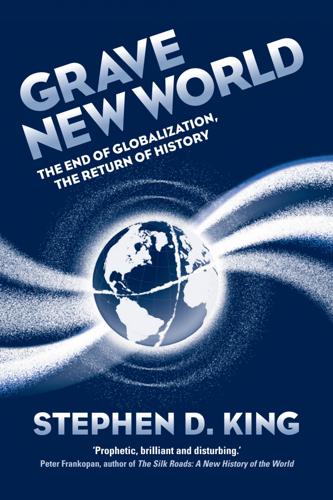
Grave New World: The End of Globalization, the Return of History
by
Stephen D. King
Published 22 May 2017
Testing Piketty’s Hypothesis on the Drivers of Income Inequality: Evidence from panel VARs with heterogeneous dynamics, IMF Working Paper WP/16/160, Washington, DC, August 2016 Goos, M. and A. Manning. ‘Lousy and lovely jobs: The rising polarization of work in Britain’, Review of Economics and Statistics, 89:1 (2007), pp. 118–33 Gordon, R. The Rise and Fall of American Growth: The US standard of living since the Civil War, Princeton University Press, Princeton, NJ, 2016 Greenspan, A. The Age of Turbulence: Adventures in a new world, Allen Lane, New York, 2007 Hartshorn, P. I Have Seen the Future: A life of Lincoln Steffens, Counterpoint Press, Berkeley, 2011 Hatton, T.J. and J.G.

The Wealth of Humans: Work, Power, and Status in the Twenty-First Century
by
Ryan Avent
Published 20 Sep 2016
Feenstra, Robert C., and Taylor, Alan M., eds., Globalization in an Age of Crisis: Multilateral Economic Cooperation in the Twenty-First Century (Chicago, IL: University of Chicago Press, 2014) Floud, Roderick, Humphries, Jane, and Johnson, Paul, eds., The Cambridge Economic History of Modern Britain (Cambridge: Cambridge University Press, 2014) Ford, Martin, The Lights in the Tunnel: Automation, Accelerating Technology and the Economy of the Future (Createspace, 2009) _____, Rise of the Robots: Technology and the Threat of a Jobless Future (London: Oneworld Publications, 2015) Friedman, Milton, and Schwartz, Anna, A Monetary History of the United States, 1867–1960 (Princeton, NJ: Princeton University Press, 1963) Fukuyama, Francis, The End of History and the Last Man (The Free Press, 1992) Glaeser, Edward, Triumph of the City: How Our Greatest Invention Makes Us Richer, Smarter, Greener, Healthier, and Happier (London: Macmillan, 2011) Goldin, Claudia and Katz, Lawrence, The Race Between Education and Technology (Cambridge, MA: Harvard University Press, 2008) Gordon, Robert, The Rise and Fall of American Growth: The U.S. Standard of Living since the Civil War (Princeton, NJ: Princeton University Press, 2016) Hansen, Alan Harvey, Full Recovery or Stagnation (New York, NY: W. W. Norton & Company, 1938) Hayes, Christopher, Twilight of the Elites: America After Meritocracy (New York, NY: Crown Publishing Group, 2012) Keynes, John Maynard, Essays in Persuasion, John Maynard Keynes (London: Macmillan, 1931) Landau, Ralph, Taylor, Timothy, and Wright, Gavin, eds., The Mosaic of Economic Growth (Palo Alto, CA: Stanford University Press, 1995) Larson, Erik, The Devil in the White City: Murder, Magic and Madness at the Fair that Changed America (New York, NY: Crown Publishing Group, 2003) Mason, Paul, Postcapitalism: A Guide to Our Future (London: Allen Lane, 2015) Malthus, Thomas, An Essay on the Principle of Population (London: J.
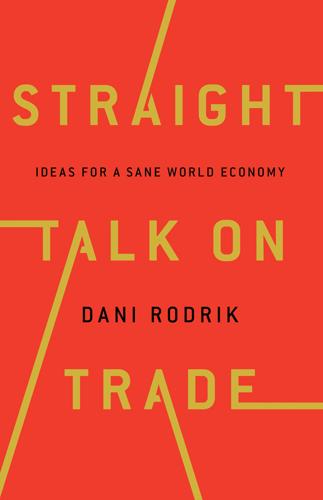
Straight Talk on Trade: Ideas for a Sane World Economy
by
Dani Rodrik
Published 8 Oct 2017
Lopez-Calva, and Eduardo Ortiz-Juarez, “Deconstructing the Decline in Inequality in Latin America,” Tulane Economics Working Paper Series, Working Paper 1314, April 2013. 14. James Manyika, et al., Digital America: A Tale of the Haves and Have-Mores, McKinsey Global Institute Report, December 2015. 15. Robert J. Gordon, The Rise and Fall of American Growth: The U.S. Standard of Living since the Civil War, Princeton University Press, Princeton, NJ, 2016. 16. Tyler Cowen, “Economic Development in an ‘Average is Over’ World,” Working Paper, April 8, 2016. 17. Margaret McMillan, Dani Rodrik, and Íñigo Verduzco-Gallo, “Globalization, Structural Change, and Productivity Growth, with an Update on Africa,” World Development, vol. 63, 2014: 11–32. 18.
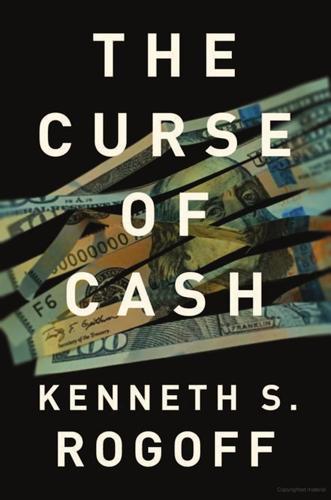
The Curse of Cash
by
Kenneth S Rogoff
Published 29 Aug 2016
Journal of Money, Credit and Banking 32 (4): 1007–35. Gopinath, Gita. 2015. “The International Price System.” In Proceedings of the Kansas City Federal Reserve Bank Symposium on Inflation Dynamics and Monetary Policy, Jackson Hole, WY, August 27–29. Federal Reserve Bank of Kansas City. Gordon, Robert J. 2016. The Rise and Fall of American Growth. Princeton, NJ: Princeton University Press. Greene, Claire, and Scott Schuh. 2014. “US Consumers’ Holdings and Use of $100 Bills.” Federal Reserve Bank of Boston Research Data Report 14-3 (November 25). Grubb, Farley. 2006. “Benjamin Franklin: And the Birth of a Paper Money Economy.”
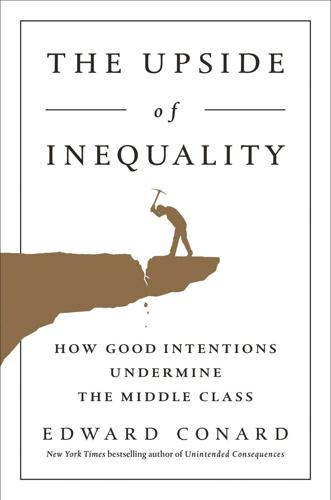
The Upside of Inequality
by
Edward Conard
Published 1 Sep 2016
John Cochrane, “Toward a Run-Free Financial System,” National Bureau of Economic Research, 2014, https://faculty.chicagobooth.edu/john.co chrane/research/papers/run_free.pdf. Edward Lazear, “How Not to Prevent the Next Financial Meltdown,” Wall Street Journal, October 2, 2015, http://www.wsj.com/articles/how-not-to-pre vent-the-next-financial-meltdown-1443827426. 30. Conard, Unintended Consequences. 31. Robert Gordon, The Rise and Fall of American Growth (Princeton, NJ: Princeton University Press, 2016). Tyler Cowen, The Great Stagnation: How America Ate All the Low-Hanging Fruit of Modern History, Got Sick, and Will (Eventually) Feel Better (New York: Dutton, 2011). 32. John Maynard Keynes, The Economic Consequences of Peace (New York: Harcourt, Brace and Howe, 1920). 33.

The Corruption of Capitalism: Why Rentiers Thrive and Work Does Not Pay
by
Guy Standing
Published 13 Jul 2016
Haldane, ‘A radical prescription’, Prospect, October 2015, pp. 36–8. 55 J. Kay, Other People’s Money: Masters of the Universe or Servants of the People? (London: Profile Books, 2015); W. Hutton, How Good We Can Be (London: Little, Brown, 2015). 56 ‘The other deficit’, The Economist, 17 October 2015, p. 38. 57 R. Gordon, The Rise and Fall of American Growth (Princeton: Princeton University Press, 2016). Chapter 2 THE SHAPING OF RENTIER CAPITALISM As neo-liberalism took shape in the 1980s, the concept of ‘competitiveness’ became almost an obsession. A country could only develop or grow fast if it were more competitive than others, which to a large extent meant having lower costs of production and greater profitability than ‘competitors’, as well as lower taxes on potential investors.

SUPERHUBS: How the Financial Elite and Their Networks Rule Our World
by
Sandra Navidi
Published 24 Jan 2017
Douglas Rushkoff, Throwing Rocks at the Google Bus: How Growth Became the Enemy of Prosperity (New York: Penguin Publishing Group, 2016), 4, 15, 22, Kindle edition. 46. Meadows, Thinking in Systems, Kindle location 42-46; xi; Donella Meadows, Jorgen Randers, and Dennis Meadows, Limits to Growth: The 30-Year Update (Chelsea, Vermont, Chelsea Green Publishing, 2004), Kindle location 119, Kindle edition. 47. Robert J. Gordon, The Rise and Fall of American Growth: The U.S. Standard of Living since the Civil War (Princeton, NJ: Princeton University Press, 2016), Kindle locations 82, 176, 178, 180, 222, Kindle edition. 48. Alan Greenspan, “Federal Reserve Board’s Semiannual Monetary Policy Report to the Congress,” testimony before the Committee on Banking, Housing, and Urban Affairs, U.S.

Radical Markets: Uprooting Capitalism and Democracy for a Just Society
by
Eric Posner
and
E. Weyl
Published 14 May 2018
The most prominent recent exponents of the techno-optimist within economics have been Erik Brynjolfsson and Andrew McAfee in their 2014 book, The Second Machine Age: Work, Progress and Prosperity in a Time of Brilliant Technologies (W. W. Norton & Company). More broadly, the most prominent techno-optimist is Ray Kurzweil, in a series of books. 2. The most prominent techno-pessimistic perspective is offered by Robert J. Gordon in his 2016 book, The Rise and Fall of American Growth: The U.S. Standard of Living since the Civil War (Princeton University Press). 3. This view is increasingly prevalent among economists. We cannot list the large group of papers published in recent years that document the large and rising importance of market power, but we refer the reader to an excellent blog, http://www.promarket.org, for a comprehensive set of resources. 4.
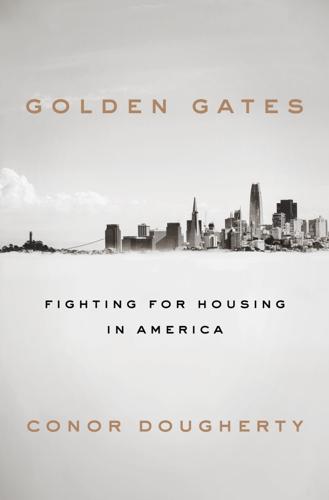
Golden Gates: Fighting for Housing in America
by
Conor Dougherty
Published 18 Feb 2020
The only possible: Rarick, California Rising, 53. five million new: Jackson, Crabgrass Frontier, 233. 1.7 million in: Jackson, Crabgrass Frontier, 233. Cape Cod had: Jackson, Crabgrass Frontier, 11. during a walk: Starr, Golden Dreams, 18. telling Khrushchev that: Robert J. Gordon, The Rise and Fall of American Growth: The U.S. Standard of Living Since the Civil War (Princeton, NJ: Princeton University Press, 2016), 357. “cannot combine the two”: Jackson, Crabgrass Frontier, 241. had to stare: D. J. Waldie, Holy Land: A Suburban Memoir (New York: W. W. Norton, 2005). a consummate booster: Rarick, California Rising, 13.

Enlightenment Now: The Case for Reason, Science, Humanism, and Progress
by
Steven Pinker
Published 13 Feb 2018
According to “the new secular stagnation hypothesis” analyzed by Lawrence Summers, even those paltry rates can be maintained (in conjunction with low unemployment) only if central banks set interest rates at zero or negative values, which could lead to financial instability and other problems.9 In a period of rising income inequality, secular stagnation could leave a majority of people with static or falling incomes for the foreseeable future. If economies stop growing, things could get ugly. No one really knows why productivity growth slacked off in the early 1970s or how to bring it back up.10 Some economists, like Robert Gordon in his 2016 The Rise and Fall of American Growth, point to demographic and macroeconomic headwinds, such as fewer working people supporting more retirees, a leveling off in the expansion of education, a rise in government debt, and the increase in inequality (which depresses demand for goods and services, because richer people spend less of their incomes than poorer people).11 Gordon adds that the most transformative inventions may already have been invented.
…
The phylogenetic roots of human lethal violence. Nature, 538, 233–37. Gordon, R. J. 2014. The turtle’s progress: Secular stagnation meets the headwinds. In C. Teulings & R. Baldwin, eds., Secular stagnation: Facts, causes and cures. London: Centre for Economic Policy Research. Gordon, R. J. 2016. The rise and fall of American growth. Princeton, NJ: Princeton University Press. Gottfredson, L. S. 1997. Why g matters: The complexity of everyday life. Intelligence, 24, 79–132. Gottlieb, A. 2016. The dream of enlightenment: The rise of modern philosophy. New York: Norton. Gottschall, J. 2012. The storytelling animal: How stories make us human.
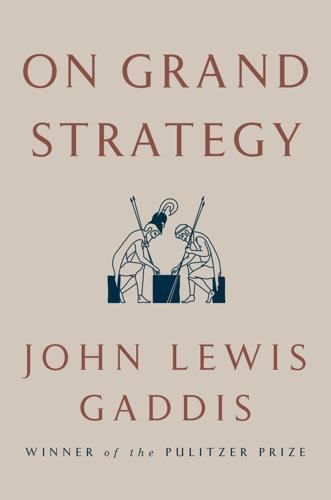
On Grand Strategy
by
John Lewis Gaddis
Published 3 Apr 2018
See also Blouet, Mackinder, pp. 164–65. 34. Roberts, Salisbury, pp. 812–14. 35. See Christopher Howard, “Splendid Isolation,” History 47, 159 (1962), 32–41. 36. Kennedy, The Rise and Fall of the Great Powers, p. 248. The comparisons in this paragraph are from pp. 200–202; but see also Robert J. Gordon, The Rise and Fall of American Growth: The U.S. Standard of Living Since the Civil War (Princeton: Princeton University Press, 2016), pp. 27–318. 37. Kennedy, The Rise and Fall of the Great Powers, p. 248. 38. See Walter Lippmann, U.S. Foreign Policy: Shield of the Republic (Boston: Little, Brown, 1943), especially pp. 11–26. 39.

The Measure of Progress: Counting What Really Matters
by
Diane Coyle
Published 15 Apr 2025
Becker Friedman Institute. http://dx.doi.org/10.2139/ssrn.3191099 Gordon, R.-J. (1999). The Boskin Commission report and its aftermath. Monetary and Economic Studies, 17(3), 41–68. Institute for Monetary and Economic Studies, Bank of Japan. https:// www.imes.boj.or.jp/research/papers/english/me17-3-2.pdf Gordon, R. J. (2016). The rise and fall of American growth: The U.S. standard of living since the Civil War. Princeton University Press. Graboyes, R. (2016, October 19). A hand for innovation—Ivan Owen, Jon Schull and e-NABLE. Inside Sources. https://insidesources.com/a-hand-for-innovation-ivan-owen-jon-schull -and-e-nable/ Graham, C., Laffan, K., and Pinto, S. (2018).
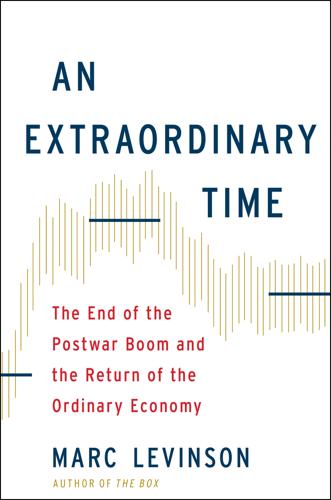
An Extraordinary Time: The End of the Postwar Boom and the Return of the Ordinary Economy
by
Marc Levinson
Published 31 Jul 2016
Sumon Bhaumik, “Productivity and the Business Cycle,” UK Department for Business Innovation and Skills, economics paper no. 12, March 2011; Robert Shackleton, “Total Factor Productivity Growth in Historical Perspective,” US Congressional Budget Office, working paper 2013–01, March 2013; Shane Greenstein, How the Internet Became Commercial: Innovation, Privatization, and the Birth of a New Network (Princeton, NJ: Princeton University Press, 2016), 249–300. 11. Robert J. Gordon, The Rise and Fall of American Growth: The U.S. Standard of Living Since the Civil War (Princeton, NJ: Princeton University Press, 2016), 2. 12. David Koistinen, “The Origins of Offshoring,” paper presented to the Business History Conference, Miami, Florida, June 27, 2015. 13. Zuliu Hu and Mohsin S. Khan, “Why Is China Growing So Fast?”

Prosperity Without Growth: Foundations for the Economy of Tomorrow
by
Tim Jackson
Published 8 Dec 2016
Online at http://static1.squarespace.com/static/545e40d0e4b054a6f8622bc9/t/54720c6ae4b06f326a8502f9/1416760426697/Peak_Stuff_17.10.11.pdf (accessed 4 January 2016). Goodwin, Michael 2012. Economix: How Our Economy Works (and Doesn’t Work) in Words and Pictures. New York: Abrams Comicarts. Gordon, Myron and Jeffrey Rosenthal 2003. ‘Capitalism’s growth imperative’. Cambridge Journal of Economics 27: 25–48. Gordon, Robert 2016. The Rise and Fall of American Growth: The US Standard of Living since the Civil War. Princeton: Princeton University Press. Gordon, Robert 2014. ‘The turtle’s progress: secular stagnation meets the headwinds’. In Teulings and Baldwin, pp. 47–60. Gordon, Robert 2012. ‘Is US economic growth over? Faltering innovation confronts the six headwinds’.

Human Frontiers: The Future of Big Ideas in an Age of Small Thinking
by
Michael Bhaskar
Published 2 Nov 2021
, New Yorker, accessed 19 January 2016, available at https://www.newyorker.com/magazine/2008/05/12/in-the-air Gleick, James (1988), Chaos: The Amazing Science of the Unpredictable, London: Vintage Glendon, Mary Ann (2002), A World Made New: Eleanor Roosevelt and the Universal Declaration of Human Rights, New York: Random House Glendon, Mary Ann (2011), The Forum and The Tower: How Scholars and Politicians Have Imagined the World, from Plato to Eleanor Roosevelt, Oxford: Oxford University Press Goldin, Ian, and Chris Kutarna (2017), Age of Discovery: Navigating the Storms of Our Second Renaissance, London: Bloomsbury Business Gordon, Robert J. (2016), The Rise and Fall of American Growth: The U.S. Standard of Living Since the Civil War, Princeton, NJ: Princeton University Press Gould, Stephen Jay (2007), Punctuated Equilibrium, Cambridge, MA: The Belknap Press of Harvard University Press Graeber, Charles (2018), The Breakthrough: Immunotherapy and the Race to Cure Cancer, London: Scribe Graeber, David (2016), The Utopia of Rules: On Technology, Stupidity, and the Secret Joys of Bureaucracy, New York: Melville House Graeber, David (2018), Bullshit Jobs: A Theory, London: Allen Lane Grant, Adam (2016), Originals: How Non-Conformists Move the World, New York: Viking Grayling, A.C. (2021), The Frontiers of Knowledge: What We Know About Science, History and The Mind – And How We Know It, London: Viking Greenspan, Alan, and Adrian Wooldridge (2018), Capitalism in America: A History, London: Allen Lane Greif, Avner, Kiesling, Lynne, and Nye, John V.C.

The Coming Wave: Technology, Power, and the Twenty-First Century's Greatest Dilemma
by
Mustafa Suleyman
Published 4 Sep 2023
GO TO NOTE REFERENCE IN TEXT Outside the weightless world of code See, for example, Michael Bhaskar, Human Frontiers: The Future of Big Ideas in an Age of Small Thinking (Cambridge, Mass.: MIT Press, 2021); Tyler Cowen, The Great Stagnation: How America Ate All the Low-Hanging Fruit of Modern History, Got Sick, and Will (Eventually) Feel Better (New York: Dutton, 2011); and Robert Gordon, The Rise and Fall of American Growth: The U.S. Standard of Living Since the Civil War (Princeton, N.J.: Princeton University Press, 2017), among many others. GO TO NOTE REFERENCE IN TEXT César Hidalgo argues César Hidalgo, Why Information Grows: The Evolution of Order, from Atoms to Economies (London: Allen Lane, 2015).

The Levelling: What’s Next After Globalization
by
Michael O’sullivan
Published 28 May 2019
The Road to Somewhere: The Populist Revolt and the Future of Politics. C. Hurst, 2017. Gordon, R. “Is U.S. Economic Growth Over? Faltering Innovation Confronts the Six Headwinds.” National Bureau of Economic Research (NBER) Working Paper 18315, August 2012. http://www.nber.org/papers/w18315. . The Rise and Fall of American Growth: The US Standard of Living since the Civil War. Princeton University Press, 2016. Gorton, G., and G. Ordonez. “Fighting Crises.” National Bureau of Economics Research (NBER) Working Paper 22787, 2016. Graves, R. Goodbye to All That. Anchor Books, 1957. Grayling, A. C. War: An Enquiry.

It's Better Than It Looks: Reasons for Optimism in an Age of Fear
by
Gregg Easterbrook
Published 20 Feb 2018
So, for example, 2 percent growth, divided into 72, shows that income will double in thirty-six years. Phillip Longman has written: Phillip Longman, “Justice Between Generations,” The Atlantic, June 1985. Northwestern University economist Robert Gordon has won praise from pundits: Robert Gordon, The Rise and Fall of American Growth (Princeton, NJ: Princeton University Press, 2016). The Pew Charitable Trusts found in a 2013 study: “Why Do Some Americans Leave the Bottom of the Economic Ladder But Not Others?” (Philadelphia: Pew Charitable Trusts, 2013). Economist Martin Feldstein of Harvard University has argued: Martin Feldstein, “The US Underestimates Growth,” Wall Street Journal, May 18, 2015.

Democracy and Prosperity: Reinventing Capitalism Through a Turbulent Century
by
Torben Iversen
and
David Soskice
Published 5 Feb 2019
Goodhart, D. 2013. The British Dream: Successes and Failures of Postwar Immigration. London: Atlantic Books. Goos, Maarten, and Alan Manning. 2007. “Lousy and Lovely Jobs: The Rising Polarization of Work in Britain.” The Review of Economics and Statistics 89 (1): 118–33. Gordon, Robert. 2016. The Rise and Fall of American Growth: The U.S. Standard of Living since the Civil War. Princeton, NJ: Princeton University Press. Granovetter, M. S. 1973. “The Strength of Weak Ties.” American Journal of Sociology 78 (6): 1360–80. Greenaway, David, and Richard Kneller. 2007. “Heterogeneity, Exporting, and Foreign Direct Investment.”
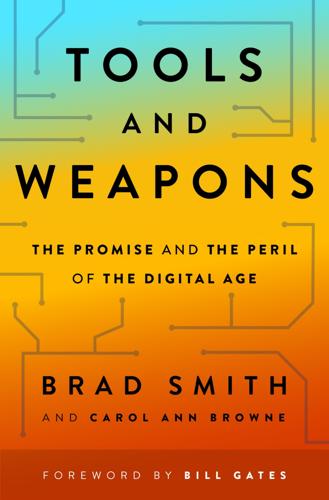
Tools and Weapons: The Promise and the Peril of the Digital Age
by
Brad Smith
and
Carol Ann Browne
Published 9 Sep 2019
“Pettet, Zellmer R. 1880–1962,” WorldCat Identities, Online Computer Library Center, accessed November 16, 2018, http://worldcat.org/identities/lccn-no00042135/. Back to note reference 20. “Zellmer R. Pettet,” Arizona Republic, August 22, 1962, Newspapers.com, https://www.newspapers.com/clip/10532517/pettet_zellmer_r_22_aug_1962/. Back to note reference 21. Robert J. Gordon, The Rise and Fall of American Growth: The U.S. Standard of Living Since the Civil War (Princeton, NJ: Princeton University Press, 2016), 60. Back to note reference 22. Ibid. Back to note reference 23. “Calorie Requirements for Horses,” Dayville Hay & Grain, http://www.dayvillesupply.com/hay-and-horse-feed/calorie-needs.html.

The End of Alchemy: Money, Banking and the Future of the Global Economy
by
Mervyn King
Published 3 Mar 2016
Goodhart, Charles, Manoj Pradhan and Pratyancha Pardeshi (2015), ‘Could Demographics Reverse Three Multi-Decade Trends?’, Morgan Stanley Research Global Economics, mimeo. Gordon, Robert J. (2012), ‘Is US Economic Growth Over? Faltering Innovation Confronts the Six Headwinds’, National Bureau of Economic Research Working Paper 18315, Cambridge, Massachusetts. —— (2016) The Rise and Fall of American Growth: The U.S. Standard of Living since the Civil War, Princeton University Press, Princeton, New Jersey. Gorton, Gary B. (1989), ‘Public Policy and the Evolution of Banking Markets’, in Bank System Risk: Charting a New Course, Proceedings of a Conference on Bank Structure and Competition, Federal Reserve Bank of Chicago, pp. 233–52. —— (2012), Misunderstanding Financial Crises, Oxford University Press, Oxford.

The Euro: How a Common Currency Threatens the Future of Europe
by
Joseph E. Stiglitz
and
Alex Hyde-White
Published 24 Oct 2016
I explained earlier how a system of a single European-wide regulatory/supervisory authority, without adequate flexibility and without common deposit insurance, could actually make matters worse. 17 In the United States, the Federal Reserve was given some of these tools in 1994 (the ability to regulate the mortgage market), but it studiously refused to use them, even as one of the members of its board warned of the consequences. See, for example, my book Freefall (New York: W. W. Norton, 2010). 18 Robert J. Gordon, The Rise and Fall of American Growth (Princeton, NJ: Princeton University Press, 2016). 19 And this is especially so because much of this public investment is complementary with private investment—that is, it raises its productivity, thus inducing more private investment. The noted economic historian Alexander Field shows how in the earlier era of the Great Depression, government infrastructure investments had precisely these effects.

Narrative Economics: How Stories Go Viral and Drive Major Economic Events
by
Robert J. Shiller
Published 14 Oct 2019
Adventures in the Screen Trade. New York: Grand Central Publishing. Gordon, Robert J. 1983. “A Century of Evidence on Wage and Price Stickiness in the United States, the United Kingdom, and Japan.” In James Tobin, ed., Macroeconomics, Prices and Quantities, 85–121. Washington, DC: Brookings. ________. 2016. The Rise and Fall of American Growth. Princeton, NJ: Princeton University Press. Gould, Eric D., Bruce A. Weinberg, and David B. Mustard. 2002. “Crime Rates and Local Labor Market Opportunities in the United States 1979–1997.” Review of Economics and Statistics 84(1):45–61. Gould, Stephen Jay. 1994. “So Near and Yet So Far.”
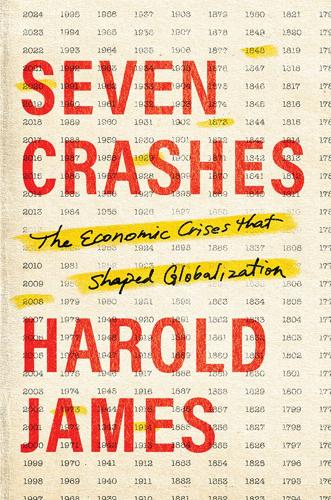
Seven Crashes: The Economic Crises That Shaped Globalization
by
Harold James
Published 15 Jan 2023
Kvasnicka, “The Economic Integration of Forced Migrants: Evidence for Post-war Germany,” Economic Journal 123 (2013): 998 –1024; A. Semrad, “Immigration and Educational Spillovers: Evidence from Sudeten German Expellees in Post-war Bavaria,” Munich Discussion Paper No. 2015 –7, 2015. 130. Robert J. Gordon, The Rise and Fall of American Growth: The U.S. Standard of Living since the Civil War (Princeton: Princeton University Press, 2016). 131. Alexander J. Field, “The Most Technologically Progressive Decade of the Century,” American Economic Review 93, no. 4 (2003): 1399. 132. Gordon, Rise, 564. 133. Ibid., 549. 134. Ibid., 537. 135.

Model Thinker: What You Need to Know to Make Data Work for You
by
Scott E. Page
Published 27 Nov 2018
“Allocative Efficiency of Markets with Zero-Intelligence Traders: Market as a Partial Substitute for Individual Rationality.” Journal of Political Economy 101, no. 1: 119–137. Goldin, Claudia, and Lawrence F. Katz. 2008. The Race Between Education and Technology. Cambridge, MA: Harvard University Press. Gordon, Robert J. 2016. The Rise and Fall of American Growth: The U.S. Standard of Living Since the Civil War. Princeton, NJ: Princeton University Press. Granovetter, Mark. 1973. “The Strength of Weak Ties.” American Journal of Sociology 78, no. 6: 1360–1380. Granovetter, Mark. 1978. “Threshold Models of Collective Behavior.” American Journal of Sociology 83, no. 6: 1360–1443.

Evil Geniuses: The Unmaking of America: A Recent History
by
Kurt Andersen
Published 14 Sep 2020
“Speculations Concerning the First Ultraintelligent Machine.” In Advances in Computers, edited by F. Alt and M. Ruminoff. Cambridge, Mass.: Academic Press, 1966. Gordon, Robert J. “Is U.S. Economic Growth Over? Faltering Innovation Confronts the Six Headwinds.” NBER Working Paper no. 18315, August 2012. ———. The Rise and Fall of American Growth: The U.S. Standard of Living Since the Civil War. Princeton: Princeton University Press, 2016. Graham, John R., Campbell R. Harvey, and Shivaram Rajgopal. “Value Destruction and Financial Reporting Decisions.” Financial Analysts Journal 62, no. 6 (2006): 27–39. Greenwood, Robin, and David Scharfstein.
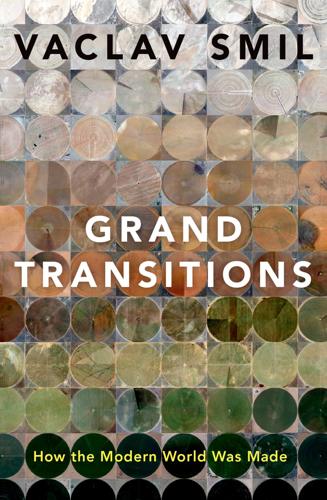
Grand Transitions: How the Modern World Was Made
by
Vaclav Smil
Published 2 Mar 2021
Gondo, Y. and L.W. Poon. 2007. Cognitive function of centenarians and its influence on longevity. Annual Review of Gerontology & Geriatrics 27:129–149. Gordon, R.J. 2012. Is U.S. Economic Growth Over? Faltering Innovations Confront the Six Headwinds. Cambridge, MA: NBER. Gordon, R.J. 2016. The Rise and Fall of American Growth. Princeton, NJ: Princeton University Press. Goren–Inbar, N. et al. 2004. Evidence of hominin control of fire at Gesher Benot Ya‘aqov, Israel. Science 304:725–727. GOS (Government Office for Science). 2016. Future of an Ageing Population. London: GOS. Governing. 2018. Car Ownership in U.S.

The Rise and Fall of the Neoliberal Order: America and the World in the Free Market Era
by
Gary Gerstle
Published 14 Oct 2022
For another neoliberal manifesto from the era, see George Gilder, Wealth and Poverty (New York: Basic Books, 1981). See also Mayer, Dark Money; Nancy MacLean, Democracy in Chains: The Deep History of the Radical Right’s Stealth Plan for America (New York: Penguin Books, 2017); Blumenthal, The Rise of the Counter-Establishment. 12.On the decline of productivity, see Robert J. Gordon, The Rise and Fall of American Growth: The U.S. Standard of Living Since the Civil War (Princeton, NJ: Princeton University Press, 2017). 13.On the shock of labor law reform defeat, see Cowie, Stayin’ Alive, 288–296. 14.David Hamilton Golland, Constructing Affirmative Action: The Struggle for Equal Employment Opportunity (Lexington: University of Kentucky Press, 2011); Nancy MacLean, Freedom Is Not Enough: The Opening of the American Workplace (Cambridge, MA: Harvard University Press, 2006), Part I. 15.David A.

Thank You for Being Late: An Optimist's Guide to Thriving in the Age of Accelerations
by
Thomas L. Friedman
Published 22 Nov 2016
Show Me the Money But if these transformations are real, why is it taking so long for them to show up in the productivity figures, as economists define them—the ratio of the output of goods and services to the labor hours devoted to the production of that output? Since productivity improvements drive growth, that is an important and now a hotly debated subject among economic writers. The economist Robert Gordon has made a compelling case in his book The Rise and Fall of American Growth: The U.S. Standard of Living Since the Civil War that the days of steadily rising growth are probably behind us. He believes all the big gains were made in the “special century” between 1870 and 1970—with the likes of automobiles, radio, television, indoor plumbing, electrification, vaccines, clean water, air travel, central heating, women’s empowerment, and air-conditioning and antibiotics.

Termites of the State: Why Complexity Leads to Inequality
by
Vito Tanzi
Published 28 Dec 2017
Gilder, George, [1981] 2012, Wealth and Poverty, New Edition (Washington DC: Regnery Publishing, Inc.). Gomez-Salvador, Ramon et al., editors, Labour Supply and Incentives to Work in Europe (Chattenham: Edward Elfgar). Goode, Richard, 1976, The Individual Income Tax, Revised Edition (Washington, DC: The Brookings Institution). Gordon, Robert J., 2015, The Rise and Fall of American Growth: The US Standard of Living Since the Civil War (Princeton, NJ: Princeton University Press). Gordon, Scott, 1999, Controlling the State: Constitutionalism from Ancient Athens to Today (Cambridge, MA: Harvard University Press). Gorton. Gary, 2015, “Stress for Success: A Review of Timothy Geithner’s Financial Crisis Memoir,” Journal of Economic Literature LIII (4) (December), pp. 975–995.

Architects of Intelligence
by
Martin Ford
Published 16 Nov 2018
If we think productivity growth matters right now for our current growth, which it does, it’s going to matter even more for the next 50 years if we still want economic growth and prosperity. MARTIN FORD: This is kind of touching on the economist Robert Gordon’s argument that may be there’s not going to be much economic growth in the future. (Robert Gordon’s 2017 book The Rise and Fall of American Growth, offers a very pessimistic view of future economic growth in the United States) JAMES MANYIKA: While Bob Gordon’s saying there may not be economic growth, he’s also questioning whether we’re going to have big enough innovations, comparable to electrification and other things like that, to really drive economic growth.

Power and Progress: Our Thousand-Year Struggle Over Technology and Prosperity
by
Daron Acemoglu
and
Simon Johnson
Published 15 May 2023
Goldin, Claudia, and Robert A. Margo. 1992. “The Great Compression: The Wage Structure in the United States at Midcentury.” Quarterly Journal of Economics 107, no. 1: 1‒34. Goldsworthy, Adrian. 2009. How Rome Fell: Death of a Superpower. New Haven, CT: Yale University Press. Gordon, Robert. 2016. The Rise and Fall of American Growth. Princeton, NJ: Princeton University Press. Gourevitch, Peter. 1986. Politics in Hard Times: Comparative Responses to International Economic Crises. Ithaca, NY: Cornell University Press. Graetz, Georg, and Guy Michaels. 2018. “Robots at Work.” Review of Economics and Statistics 100, no. 5: 753‒768.

Big Data and the Welfare State: How the Information Revolution Threatens Social Solidarity
by
Torben Iversen
and
Philipp Rehm
Published 18 May 2022
Goodman, Laurie S., Brian Landy, Roger Ashworth, and Lidan Yang. 2014. “A Look at Freddie Mac’s Loan-Level Credit Performance Data.” The Journal of Structured Finance 19(4): 52–61. Gordon, Joshua C. 2019. “The Perils of Vanguardism.” Socio-Economic Review 17(4): 947–68. Gordon, Robert J. 2016. The Rise and Fall of American Growth. The U.S. Standard of Living Since the Civil War. Princeton University Press. Gottlieb, Daniel. 2007. “Asymmetric Information in Late 19th Century Cooperative Insurance Societies.” Explorations in Economic History 44(2): 270–92. Green, Francis. 2011. “Unpacking the Misery Multiplier: How Employability Modifies the Impacts of Unemployment and Job Insecurity on Life Satisfaction and Mental Health.”

Winds of Change
by
Peter Hennessy
Published 27 Aug 2019
Ludwig Erhard, Prosperity Through Competition: The Economics of the German Miracle by Its Creator (Thames & Hudson, 1958). 9. Conversation with Lord Howell of Guildford, 11 October 2017; e-mail from David Howell, 15 September 2017. 10. TNA, PRO, PREM 11/3644, Macmillan to Menzies, ‘Secret and Personal’, 8 February 1962. 11. Robert J. Gordon, The Rise and Fall of American Growth: The US Standard of Living Since the Civil War (Princeton University Press, 2016), p. 538. 12. Ibid., pp. 533–65. 13. Robert Higgs, ‘Wartime Prosperity? A Reassessment of the US Economy in the 1940s’, Journal of Economic History, vol. 52, no. 1 (March 1992), p. 57. 14. J. K. Galbraith, The Affluent Society (Hamish Hamilton, 1958). 15.

Escape From Rome: The Failure of Empire and the Road to Prosperity
by
Walter Scheidel
Published 14 Oct 2019
Boyer The Mystery of the Kibbutz: Egalitarian Principles in a Capitalist World by Ran Abramitzky Unequal Gains: American Growth and Inequality since 1700 by Peter H. Lindert and Jeffrey G. Williamson Uneven Centuries: Economic Development of Turkey since 1820 by Şevket Pamuk The Great Leveler: Violence and the History of Inequality from the Stone Age to the Twenty-First Century by Walter Scheidel The Rise and Fall of American Growth: The U.S. Standard of Living since the Civil War by Robert J. Gordon Brazil in Transition: Beliefs, Leadership, and Institutional Change by Lee J. Alston, Marcus André Melo, Bernardo Mueller, and Carlos Pereira The Vanishing Irish: Households, Migrations, and the Rural Economy in Ireland, 1850–1914 by Timothy W.

Growth: From Microorganisms to Megacities
by
Vaclav Smil
Published 23 Sep 2019
Does the “New Economy” measure up to the great inventions of the past? Journal of Economic Perspectives 14:49–74. Gordon, R. J. 2012. Is U.S. Economic Growth Over? Faltering Innovations Confront the Six Headwinds. Cambridge, MA: National Bureau of Economic Research. Gordon, R. J. 2016. The Rise and Fall of American Growth. Princeton, NJ: Princeton University Press. Gottmann, J. 1961. Megalopolis: The Urbanized Northeastern Seaboard of the United States. New York: Twentieth Century Fund. Government of India. 2017. Draft national energy policy. http://niti.gov.in/writereaddata/files/new_initiatives/NEP-ID_27.06.2017.pdf.

EuroTragedy: A Drama in Nine Acts
by
Ashoka Mody
Published 7 May 2018
National Bureau of Economic Research Working Paper 21453, August. Gordon, Robert J. 2004. “Why Was Europe Left at the Station When America’s Productivity Locomotive Departed?” National Bureau of Economic Research Working Paper 10661, August. http://www.nber.org/papers/w10661. Gordon, Robert J. 2016. The Rise and Fall of American Growth: The U.S. Standard of Living since the Civil War. Princeton: Princeton University Press. 568 r e f e r e n c e s Gorton, Gary, and Guillermo Ordoñez. 2016. “Good Booms, Bad Booms.” National Bureau of Economic Research, Working Paper 22008, Cambridge, February. Gourinchas, Pierre-Olivier. 2002.